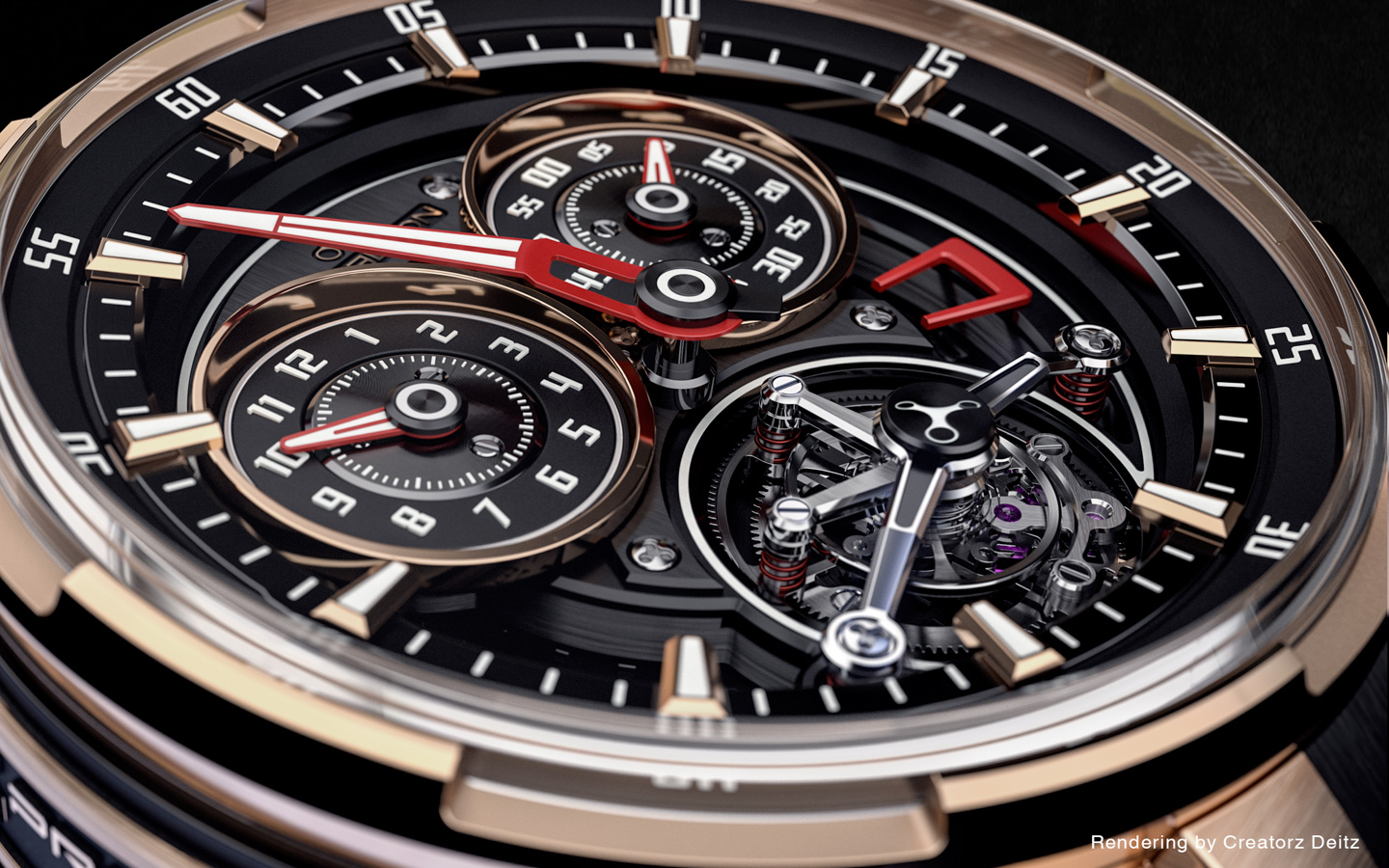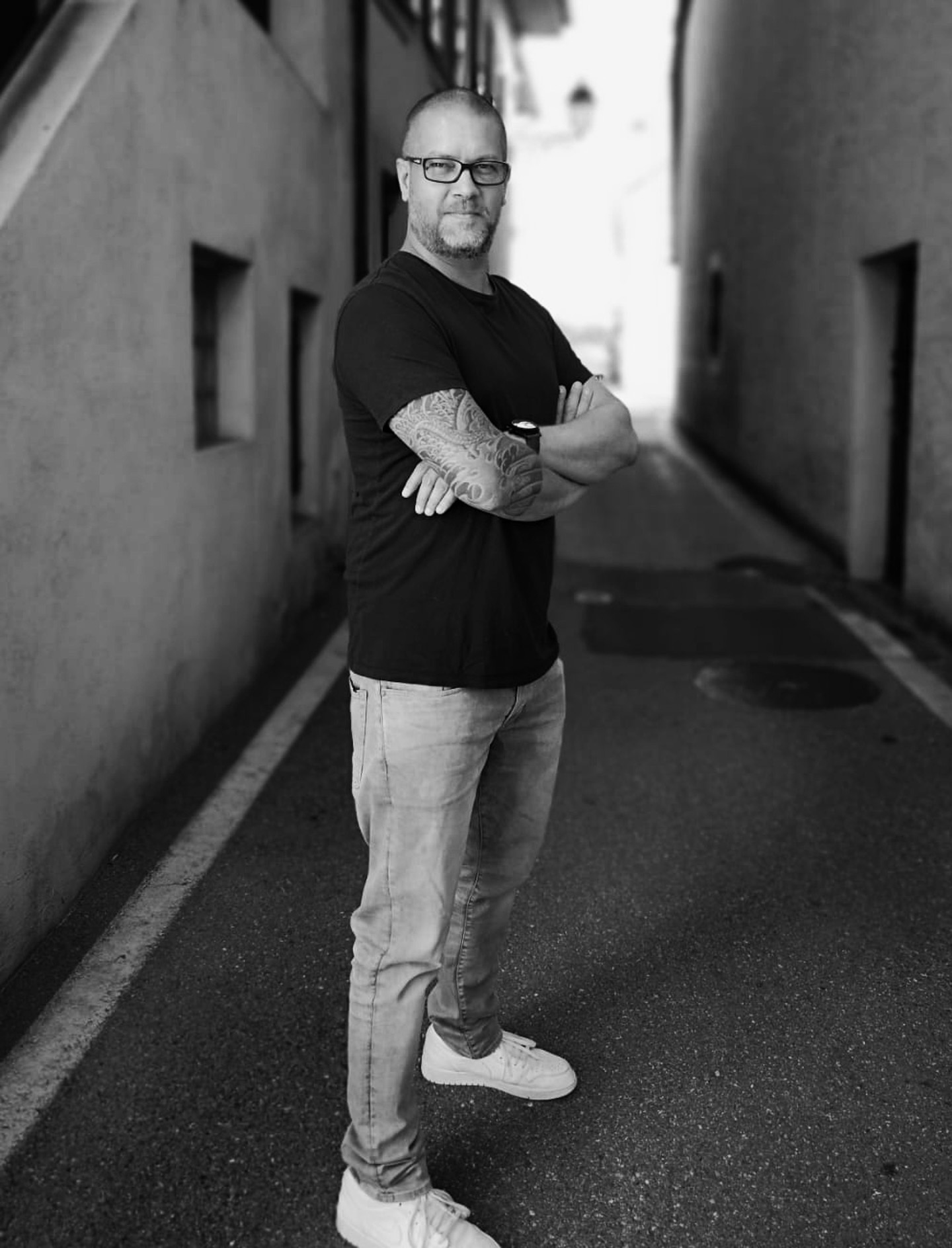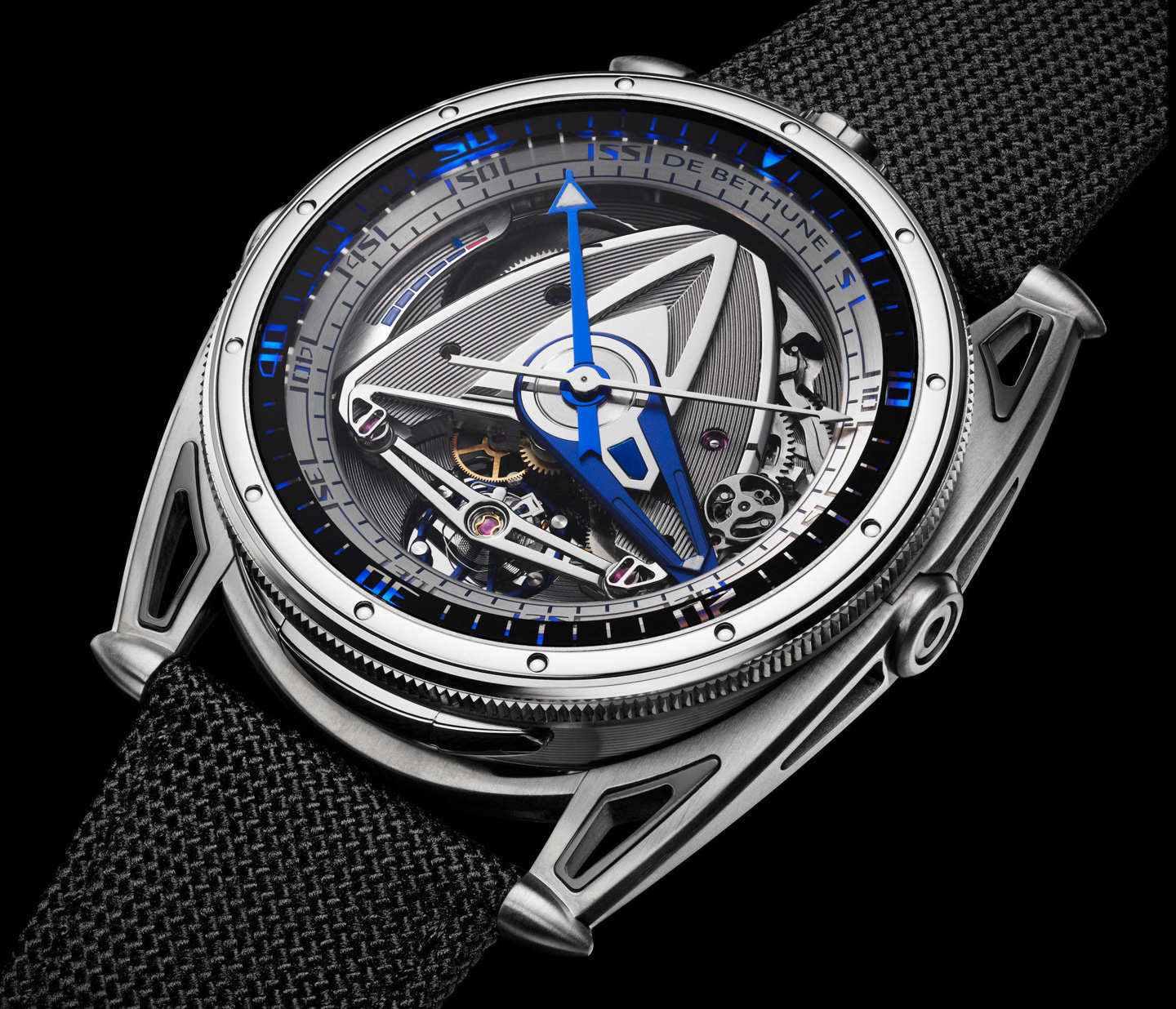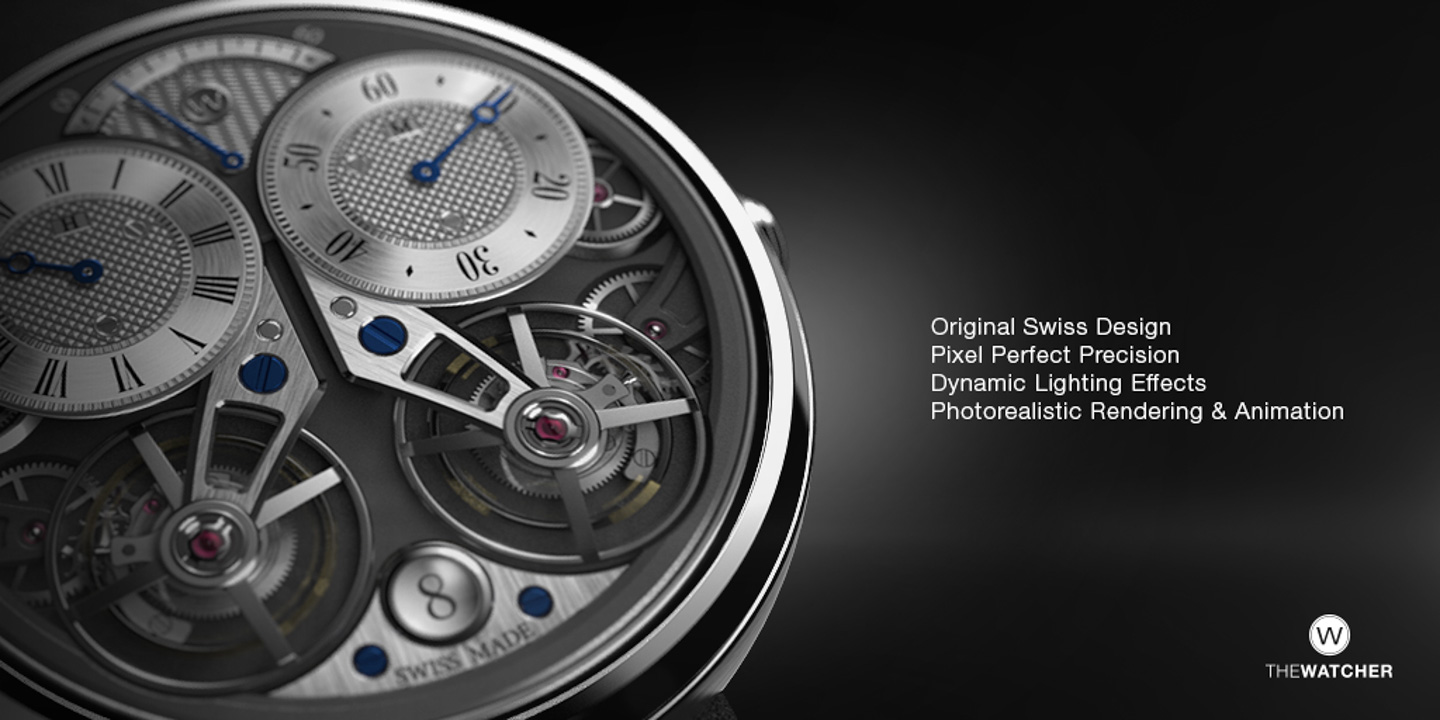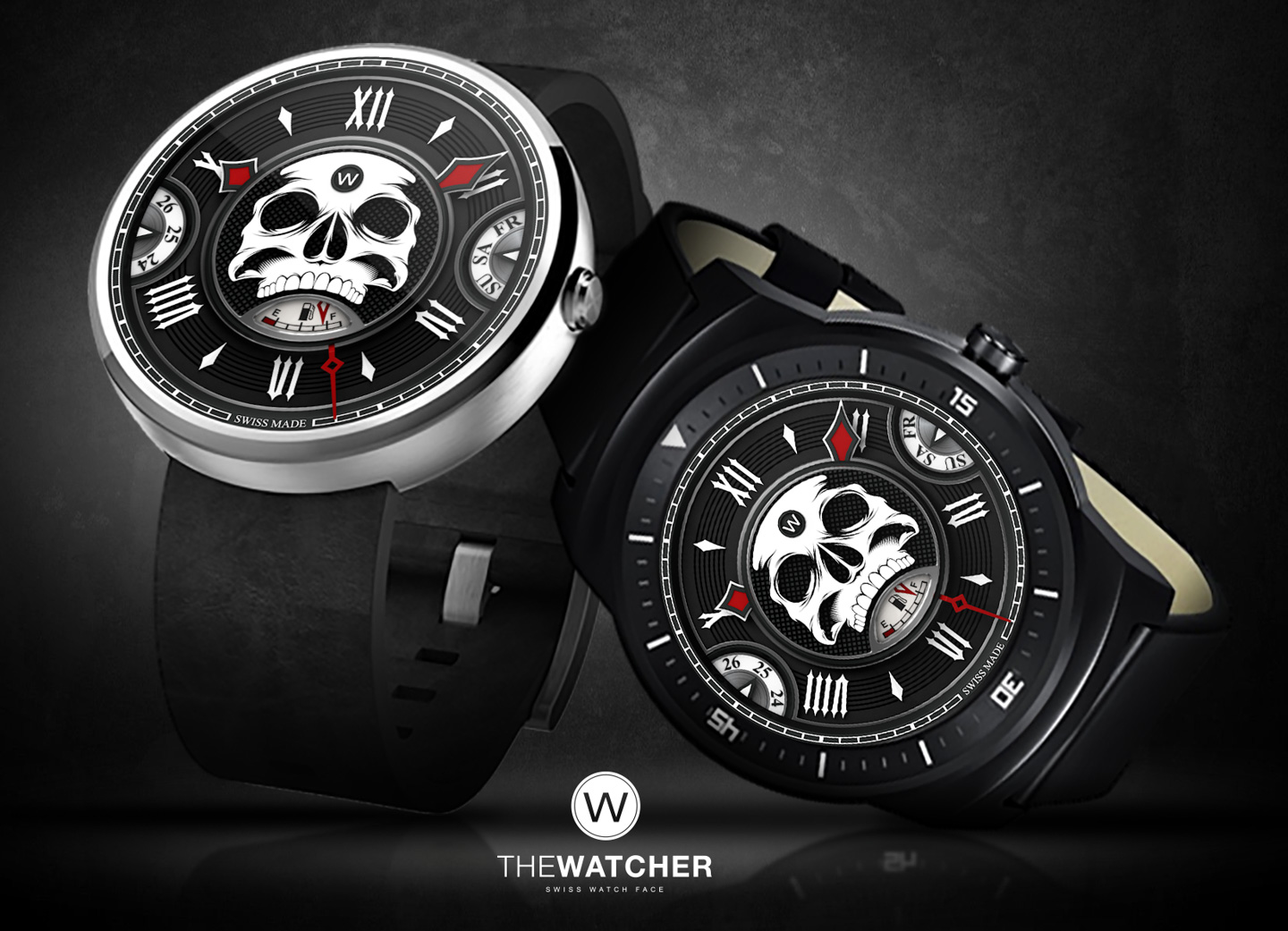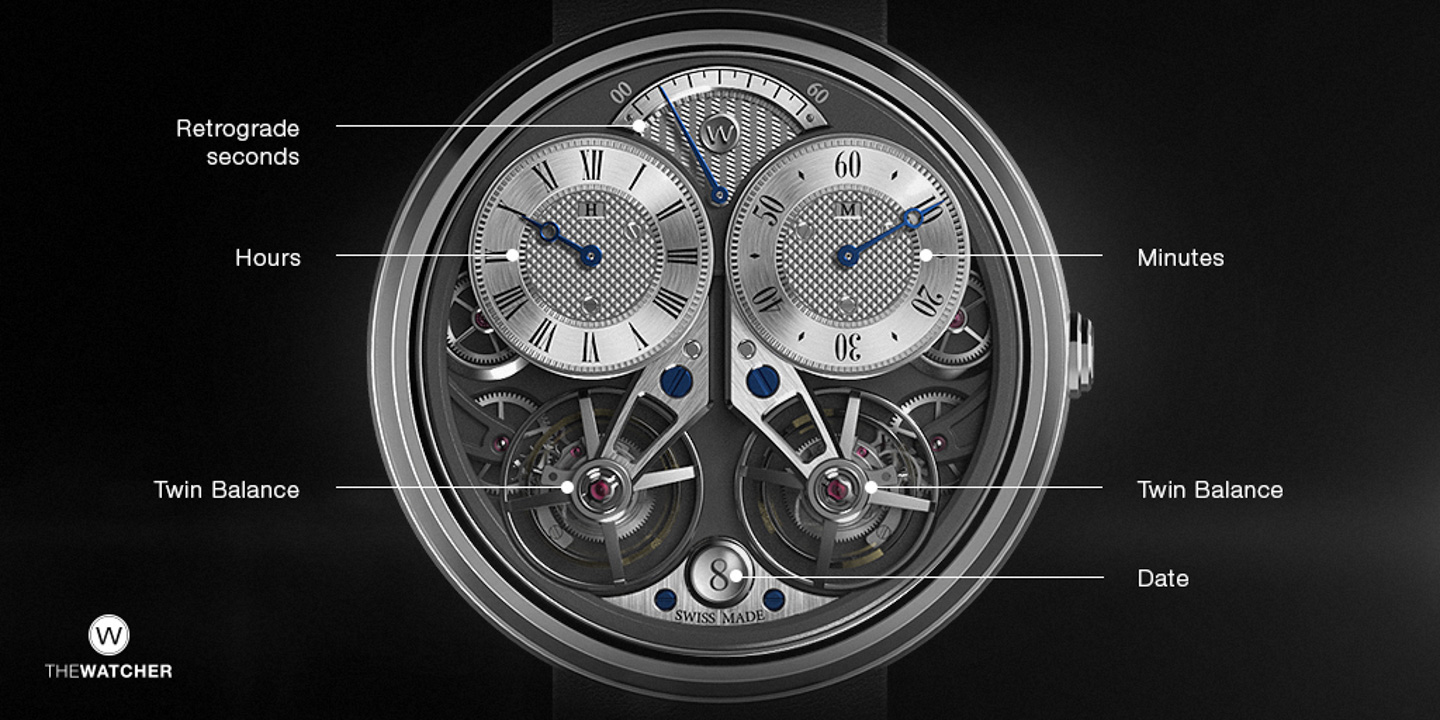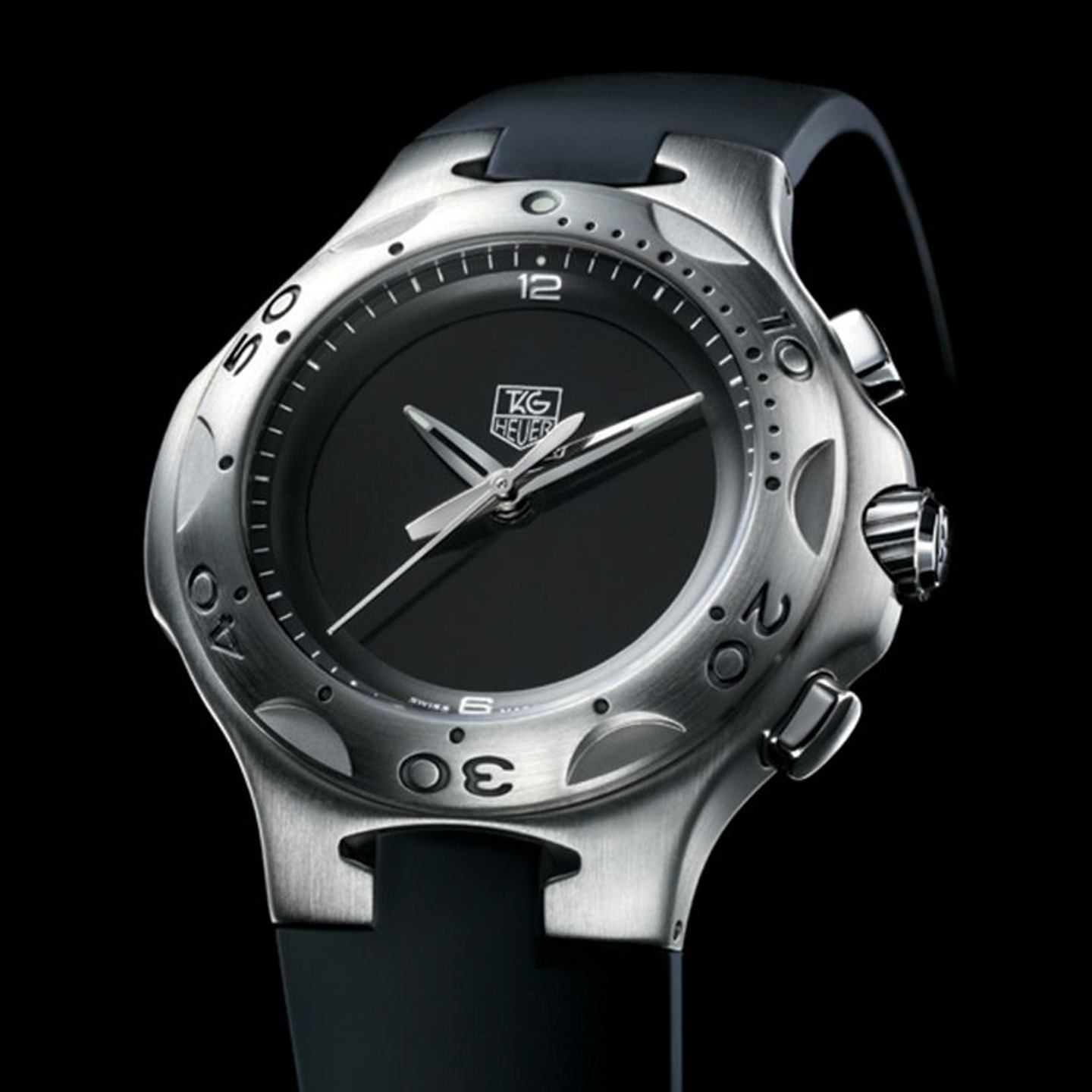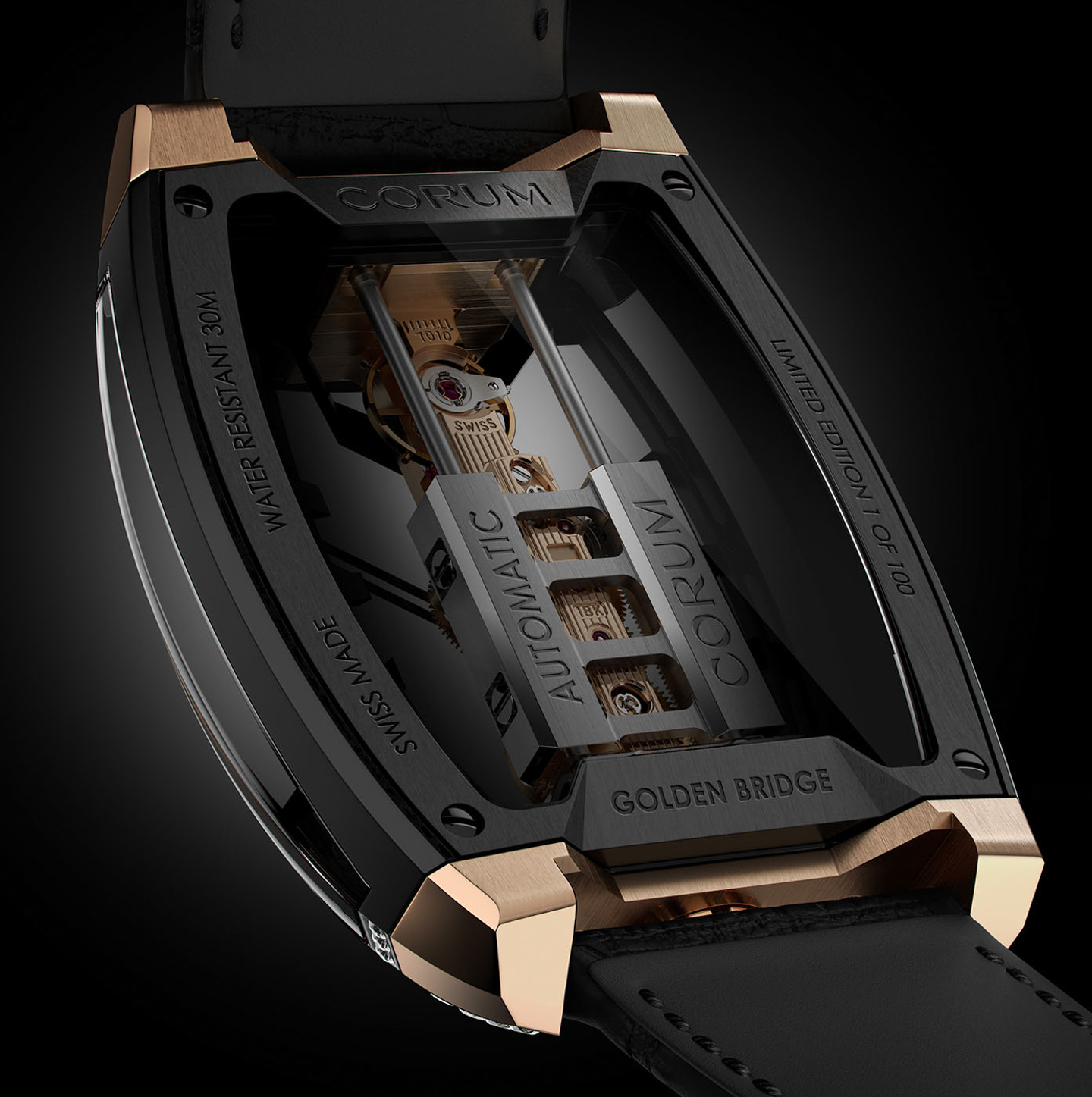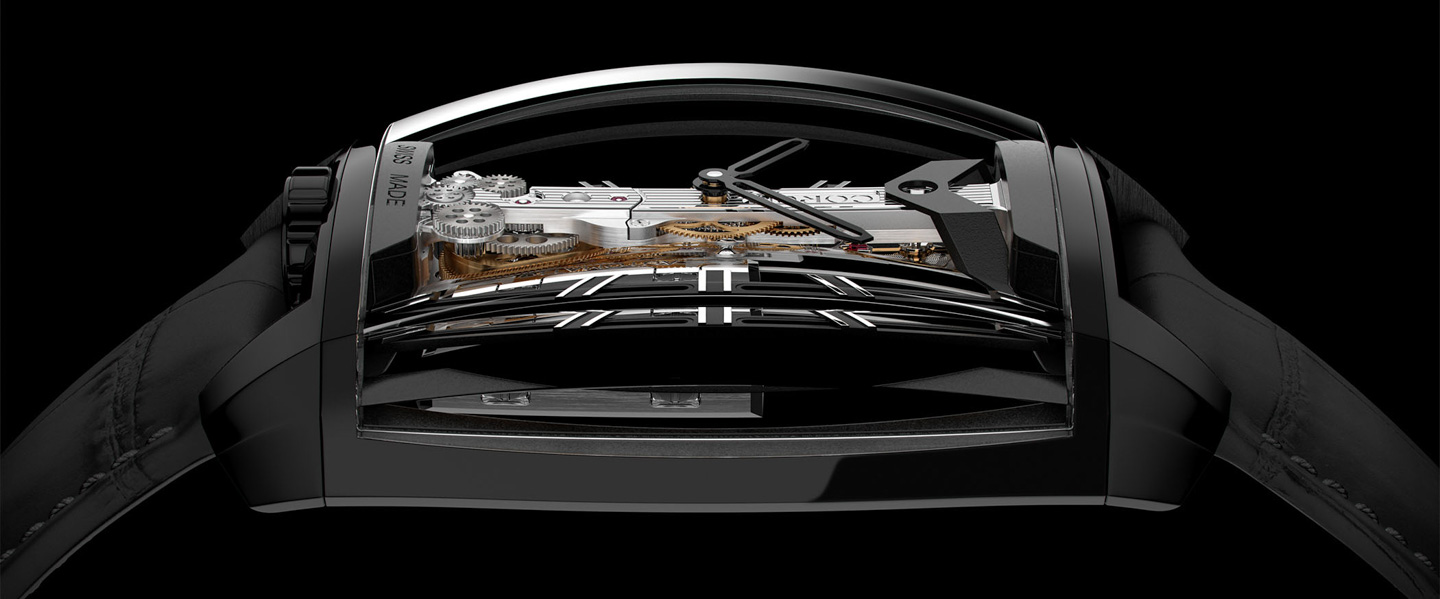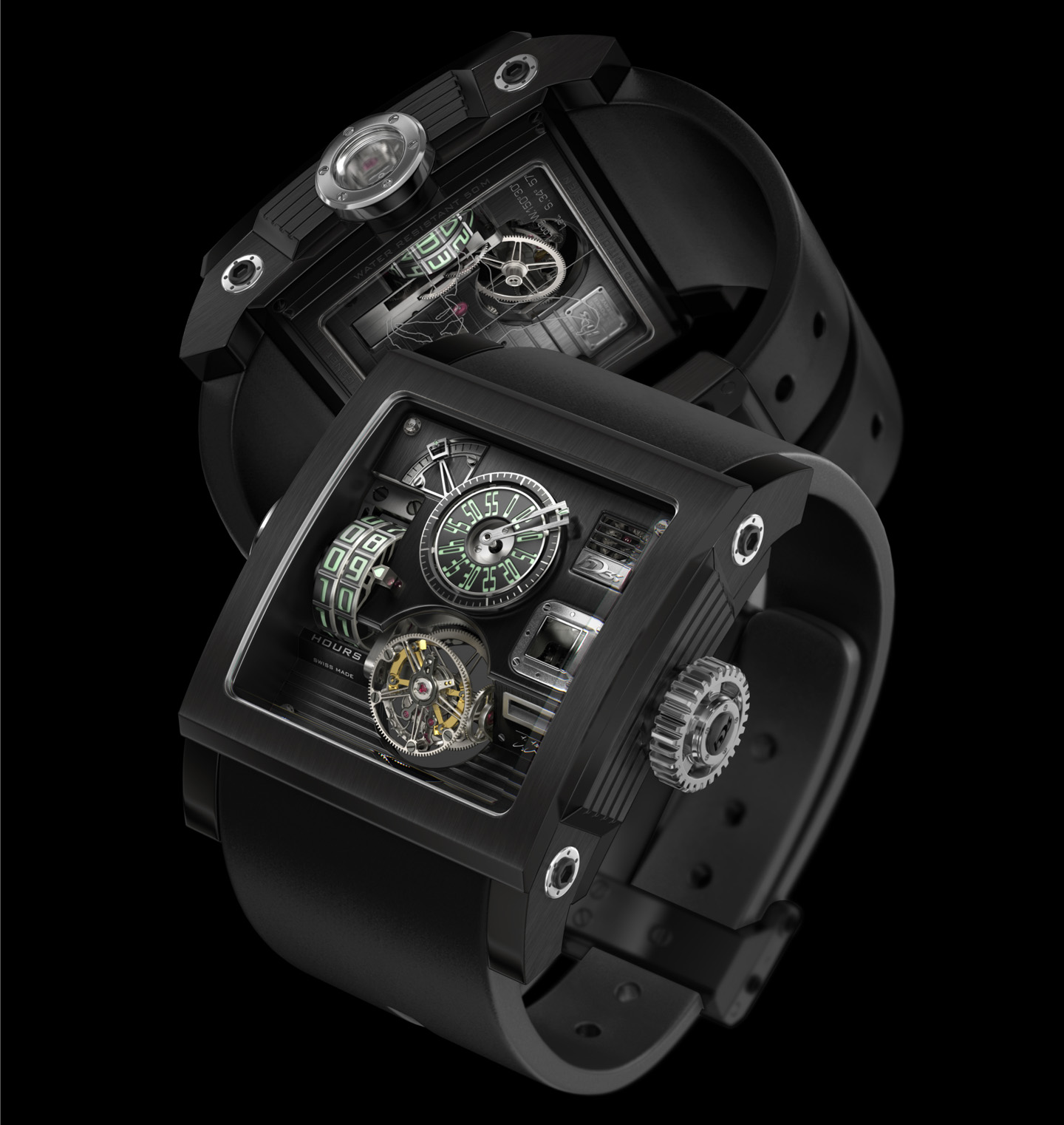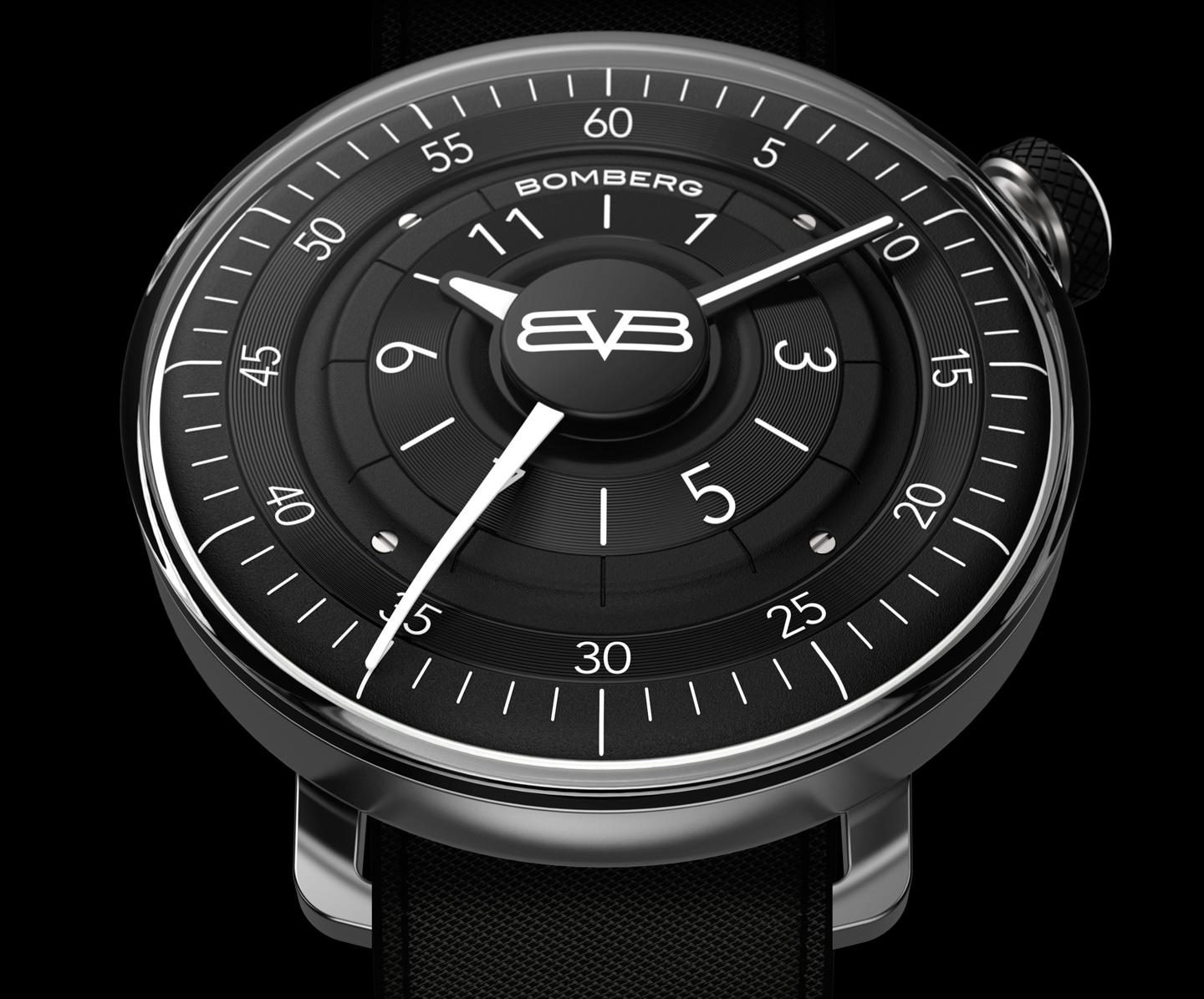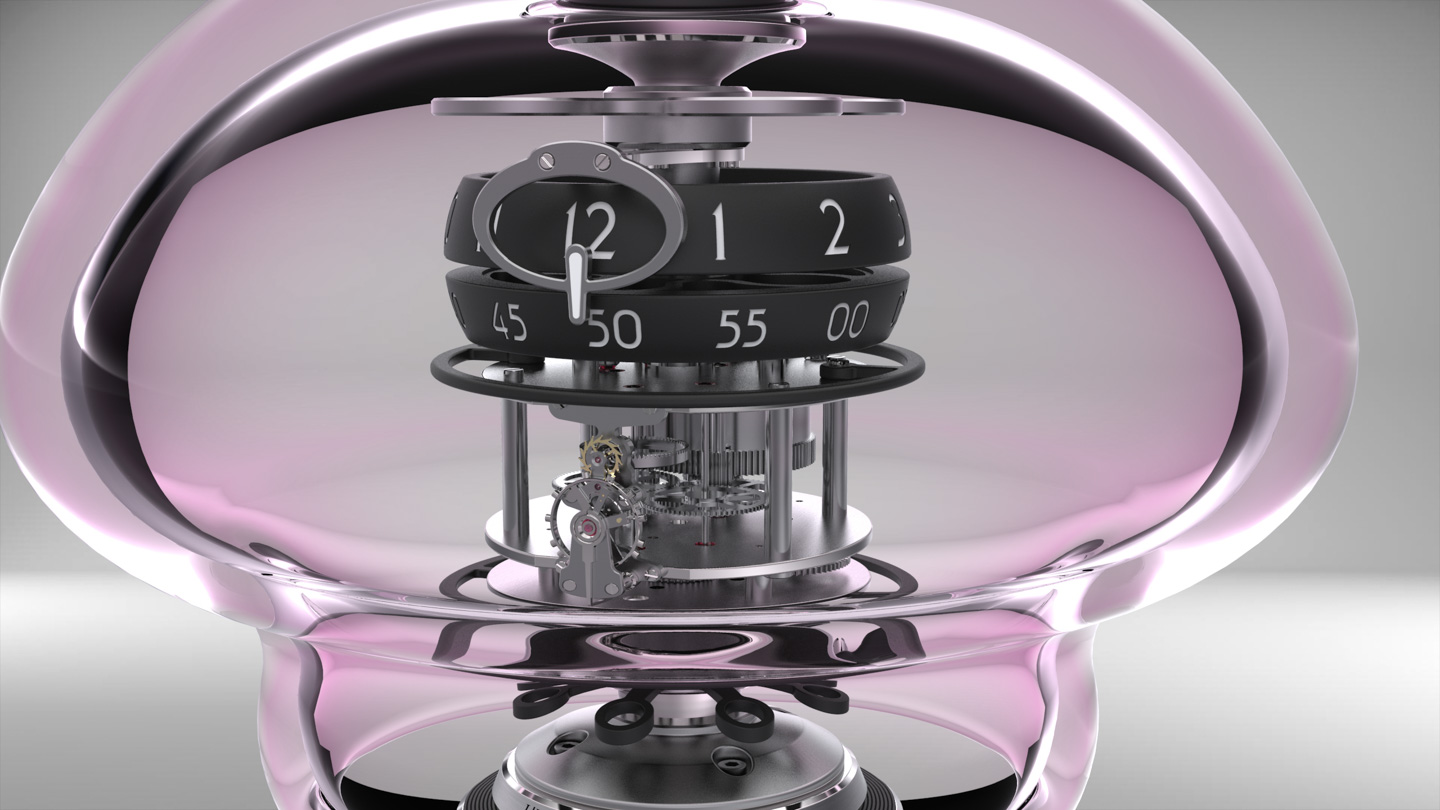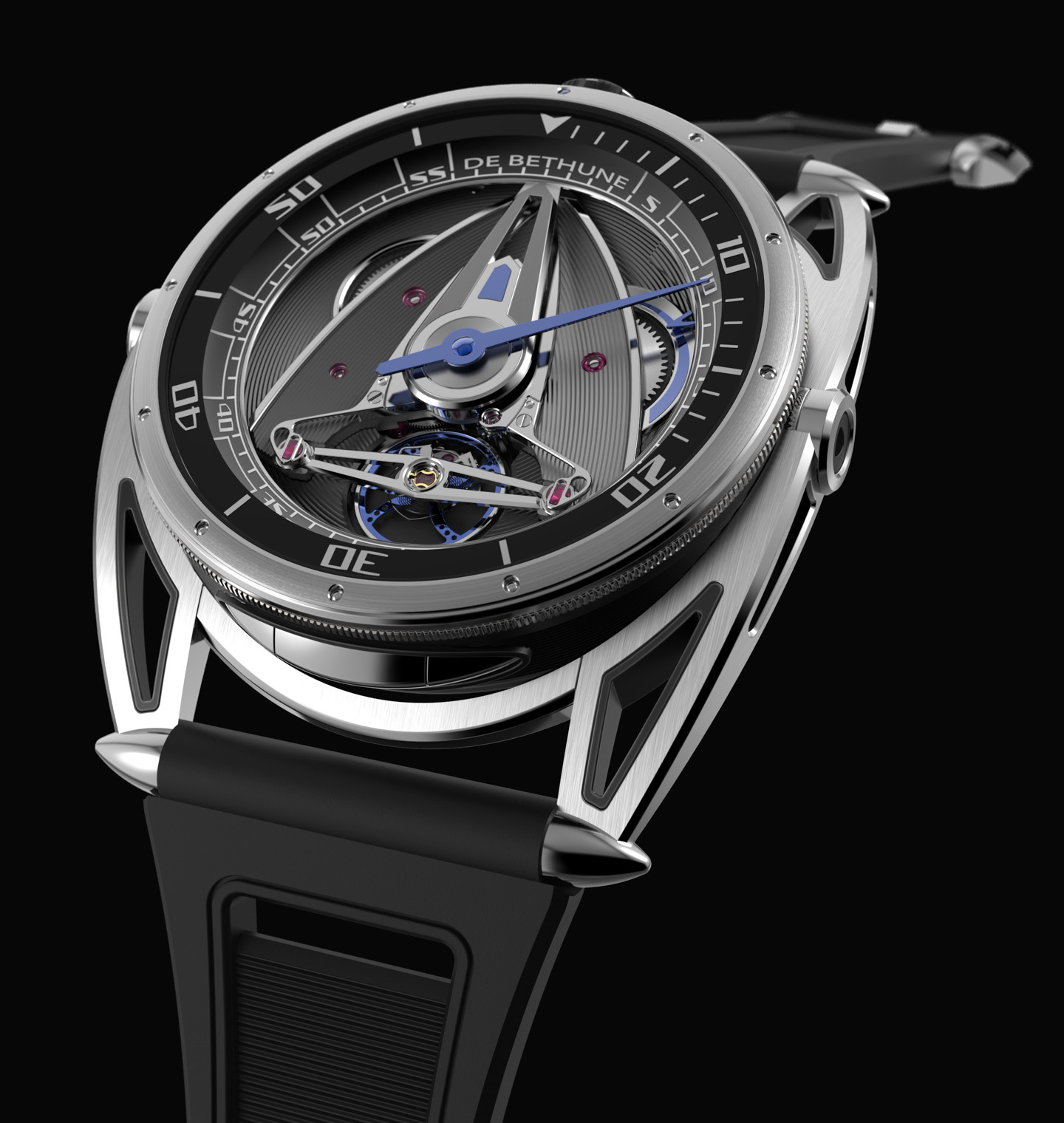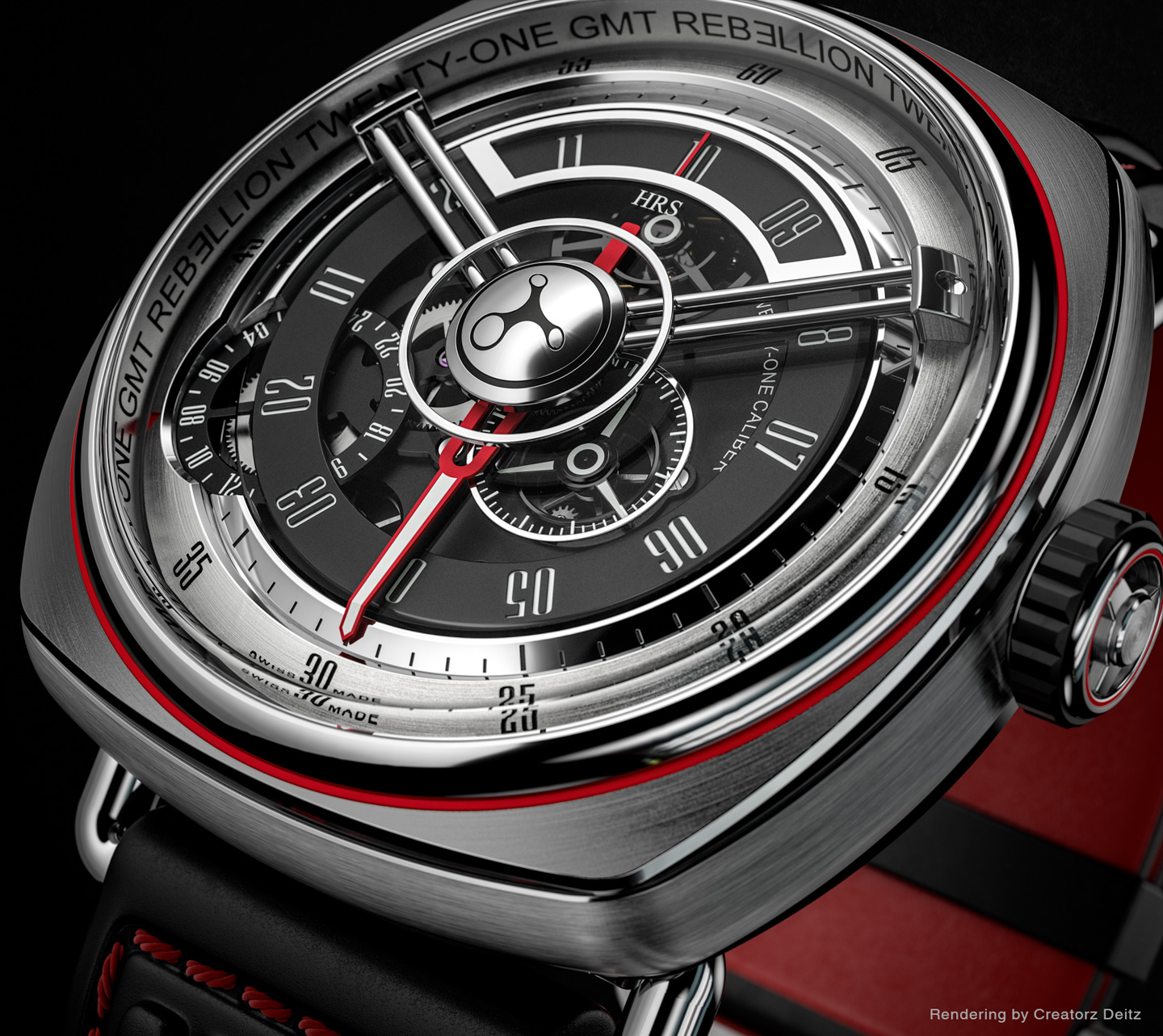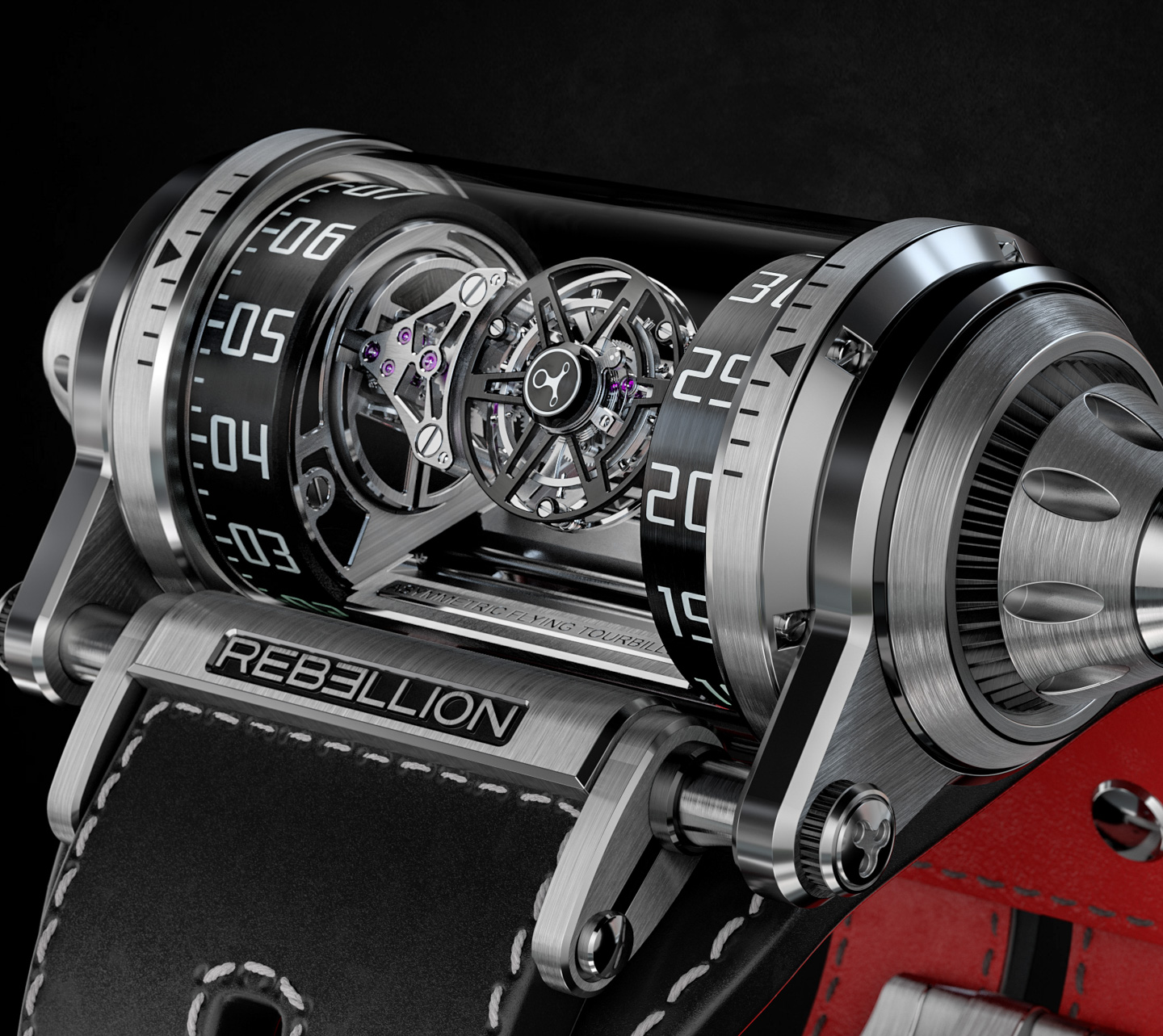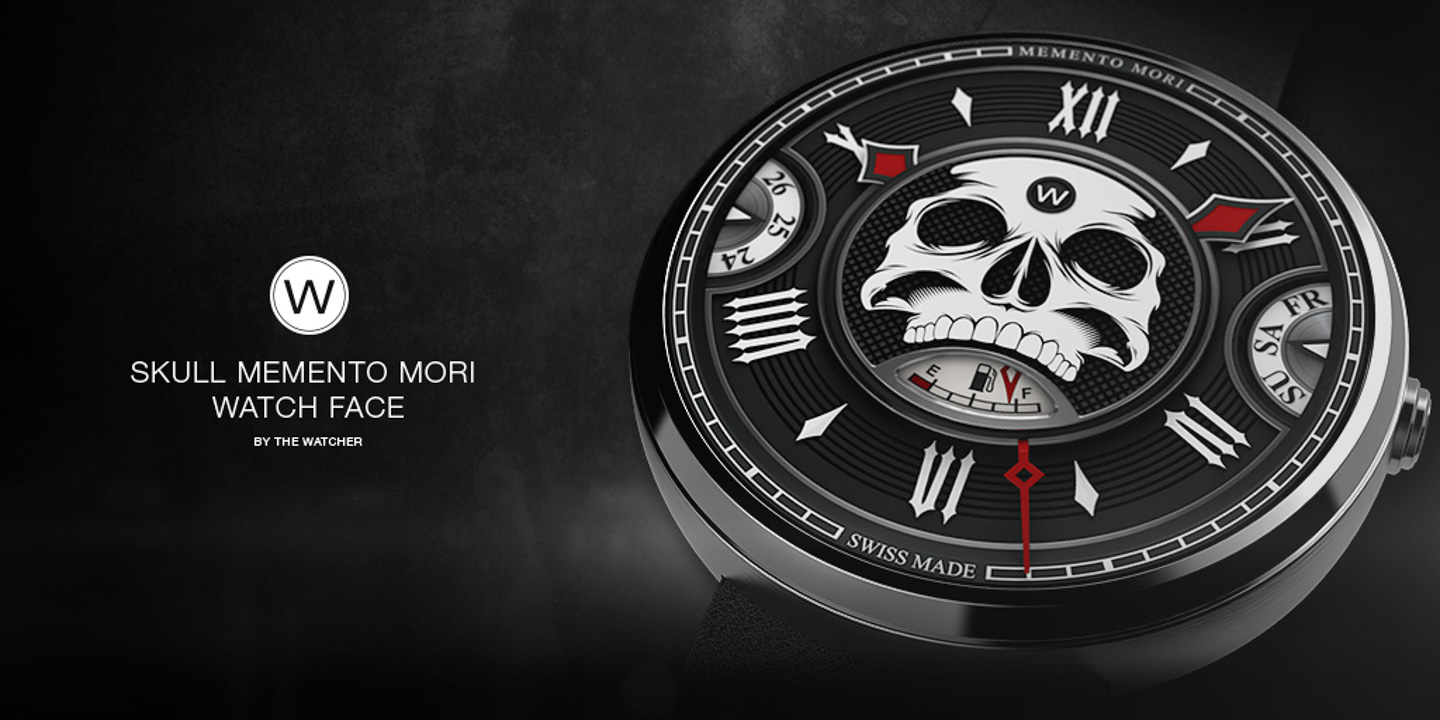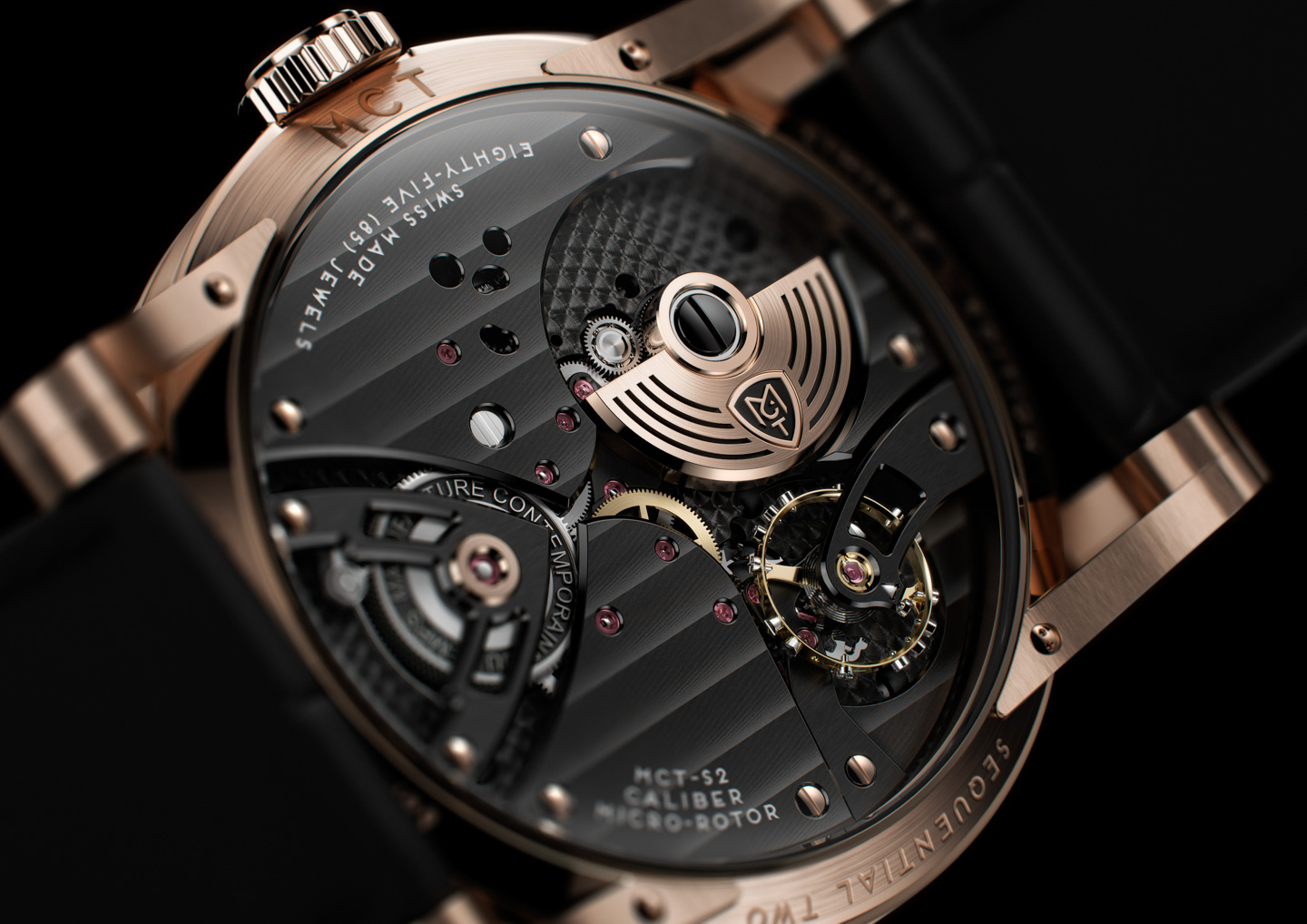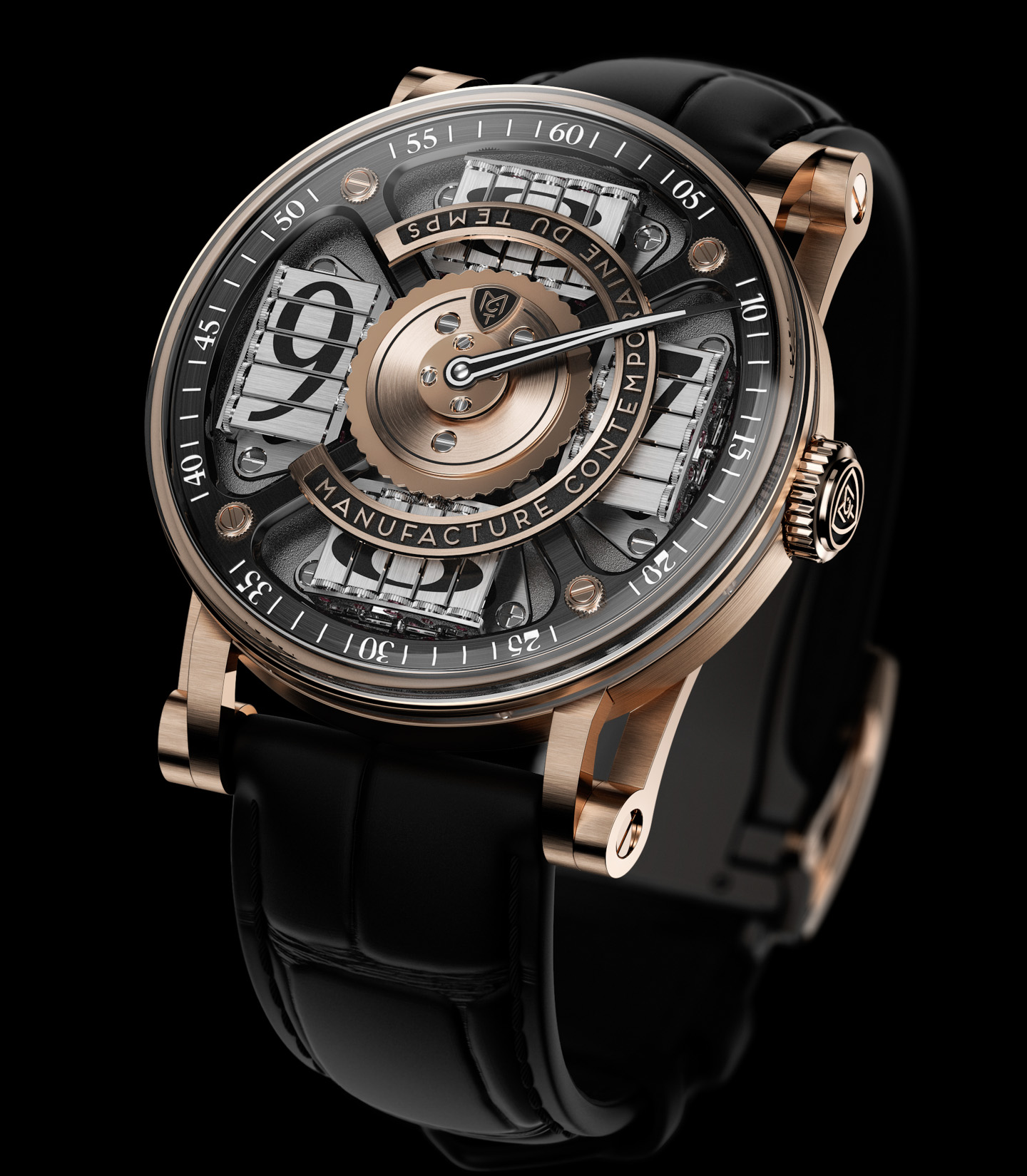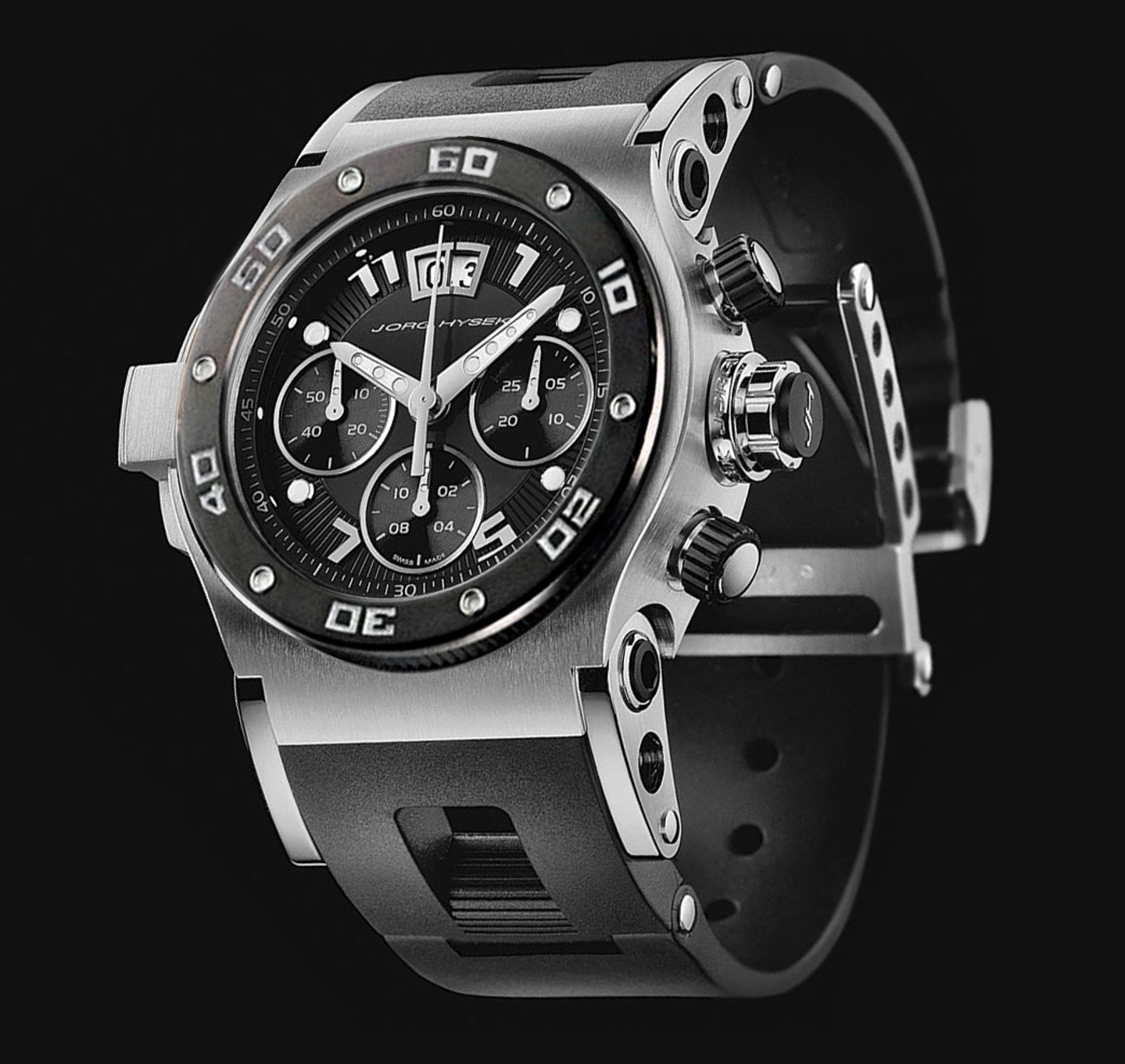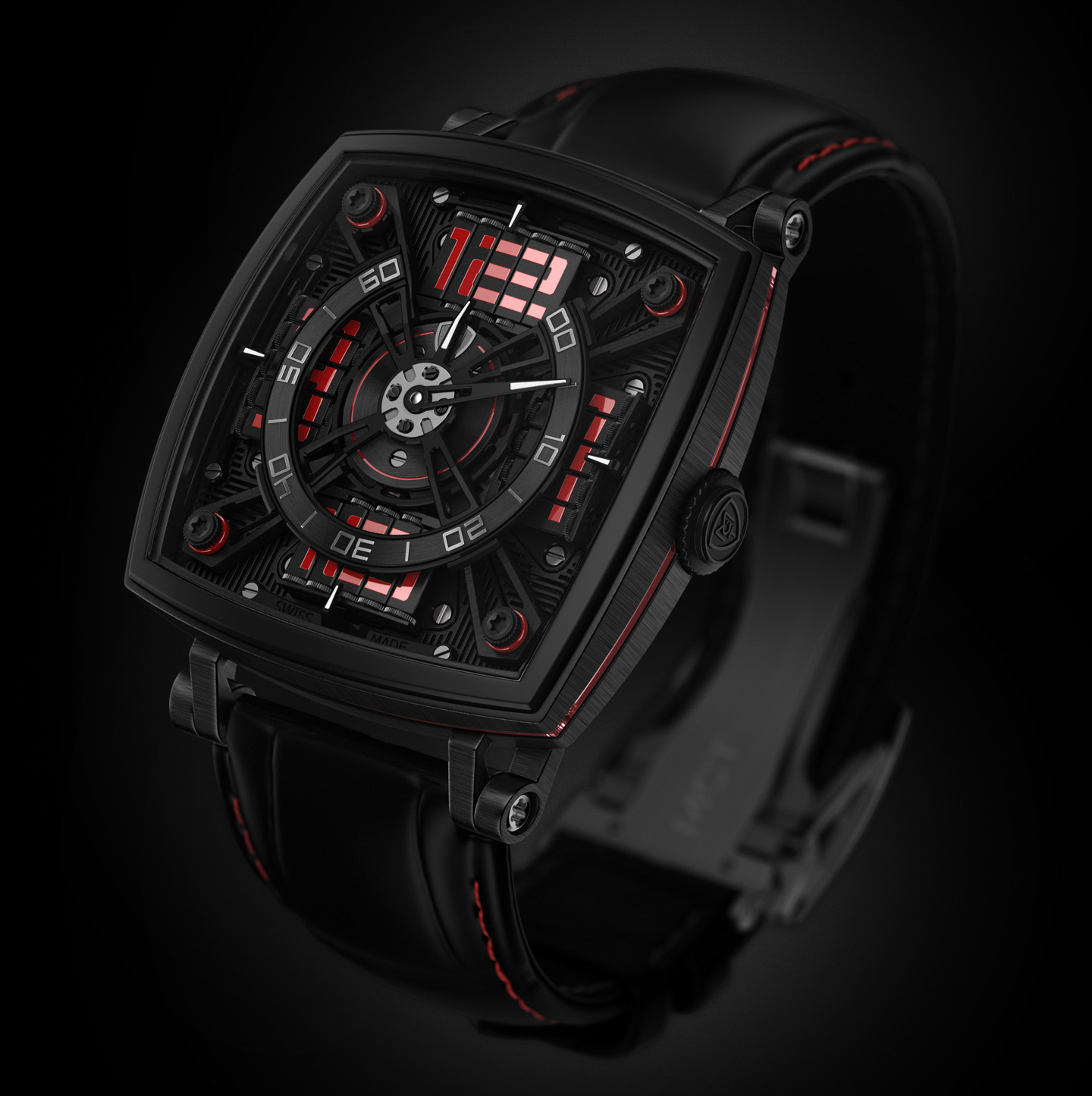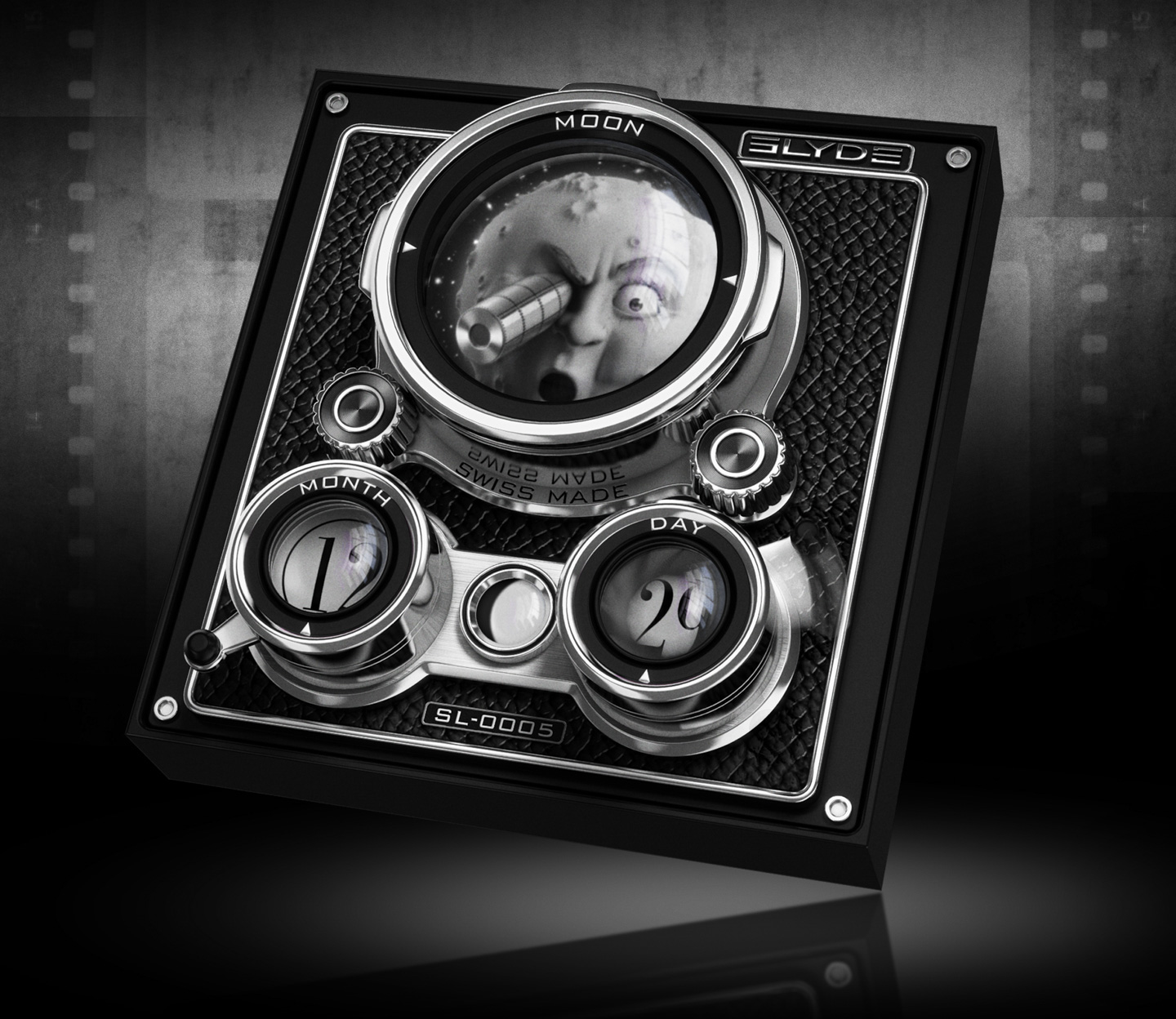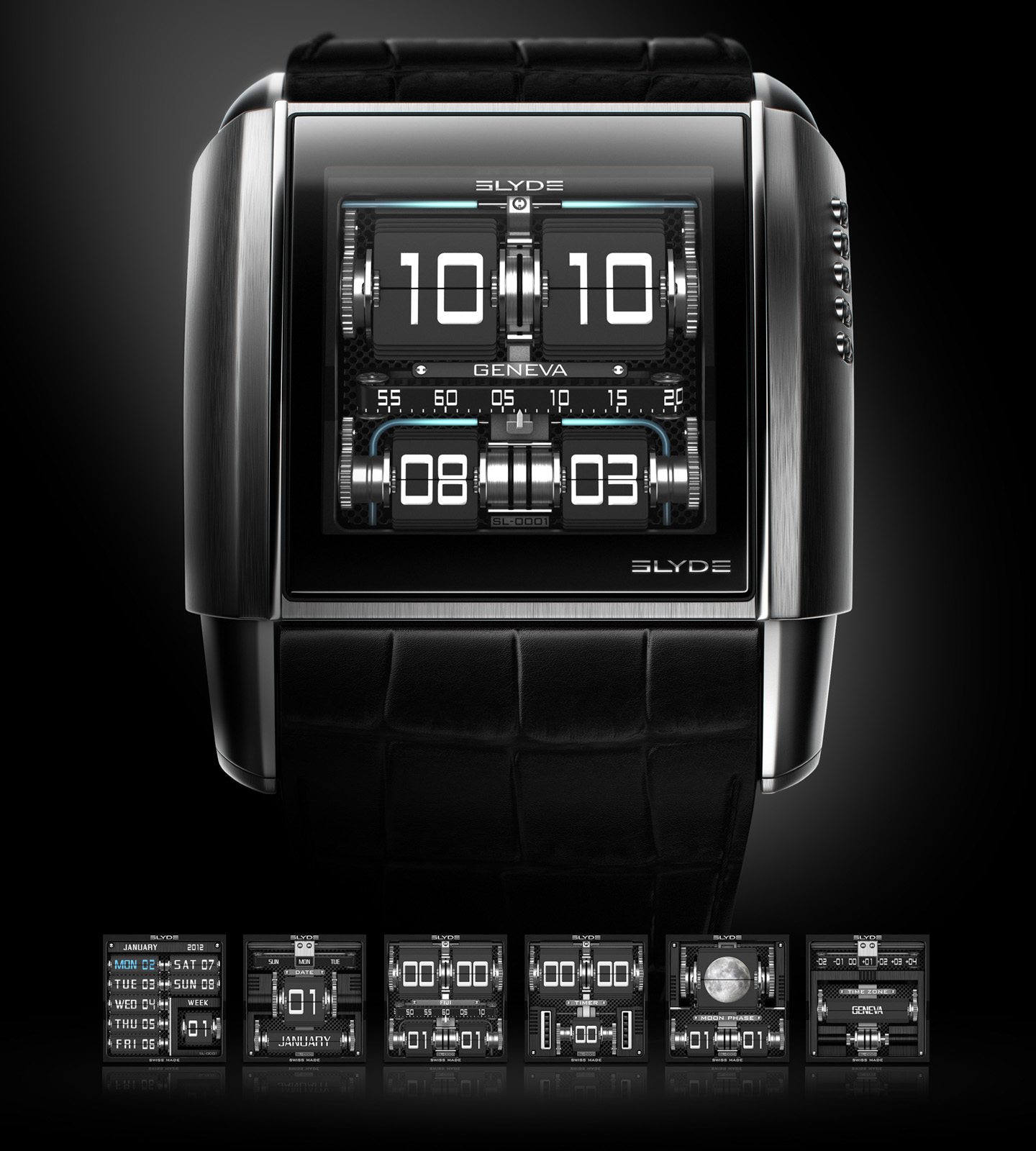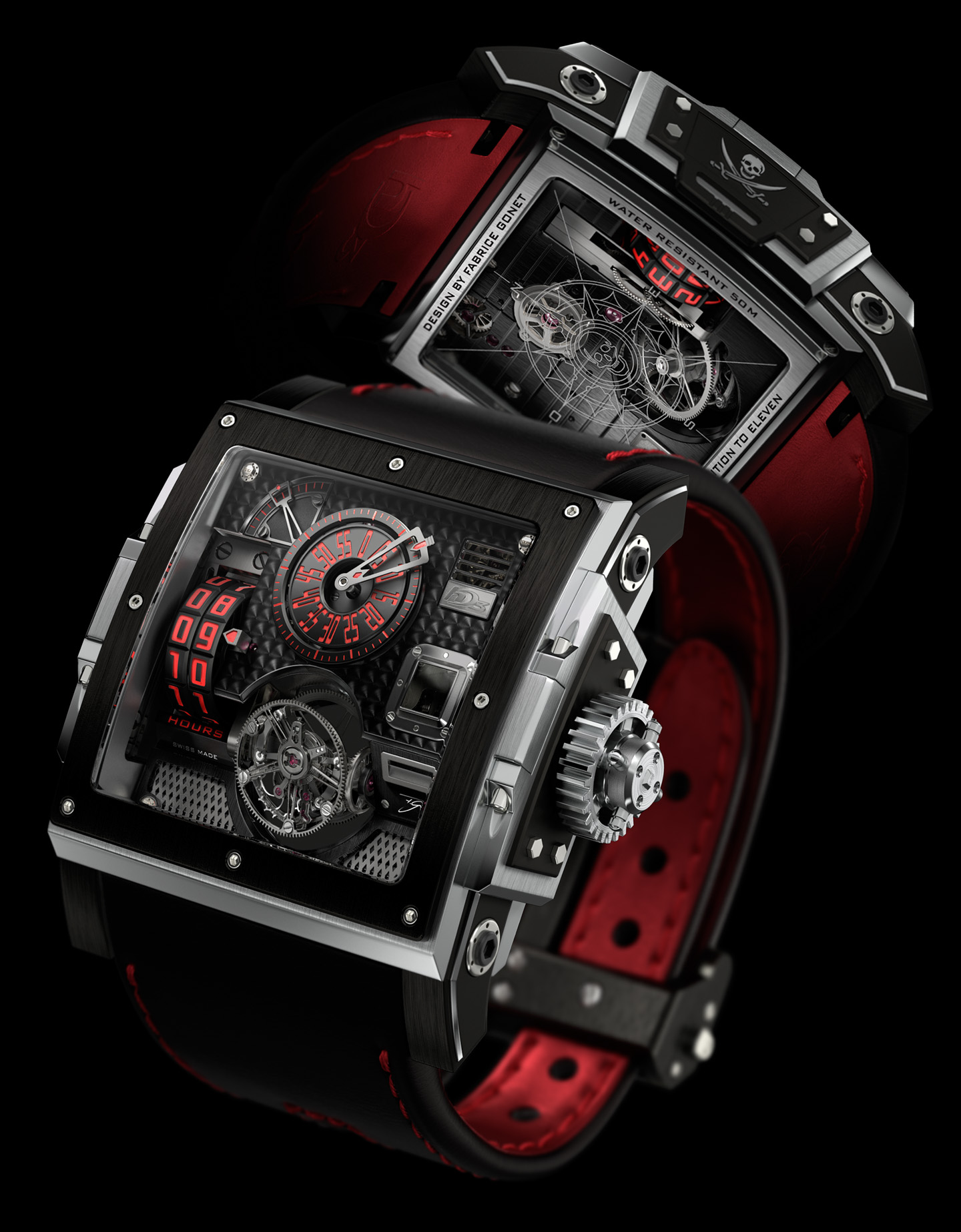
There are two types of successful watch designers in the timepiece industry: those whose names are promoted, and those whose names are a bit more discreet. Traditionally, the role of watch designer blended elements of industrial design with art and let watchmakers and marketers do the rest. Today, we have an increasingly prolific population of entrepreneurial watch designers who seek to both design and promote their own work. It will be interesting to see how this new era of watch designer fares in the marketplace, but for the time being, the traditional watch designers and their roles behind the scenes led to some of the greatest products, even if you don’t ultimately know who is responsible for the design.
In my travels to “watch land” in Switzerland, I’ve met a small handful of prolific designers who work mainly as freelancers for various brands, and whose imaginations led to many of today’s most interesting and novel timepiece creations. One such person is Mr. Fabrice Gonet, and I interview him today. His name has come up over and over again in relation to many of the modern watch designs that I admire most. Gonet is on the shy side when it comes to speaking – in large part because his native language is French. That said, I’ve met with him countless time at Baselworld and other watch trade shows in relation to many of the watches and concepts he has imagined over the years. What excites me the most about this interview article is the fact that, in one post, you can see so many of the different designs Gonet has come up with over the years, and you also get a deep look into his mind.
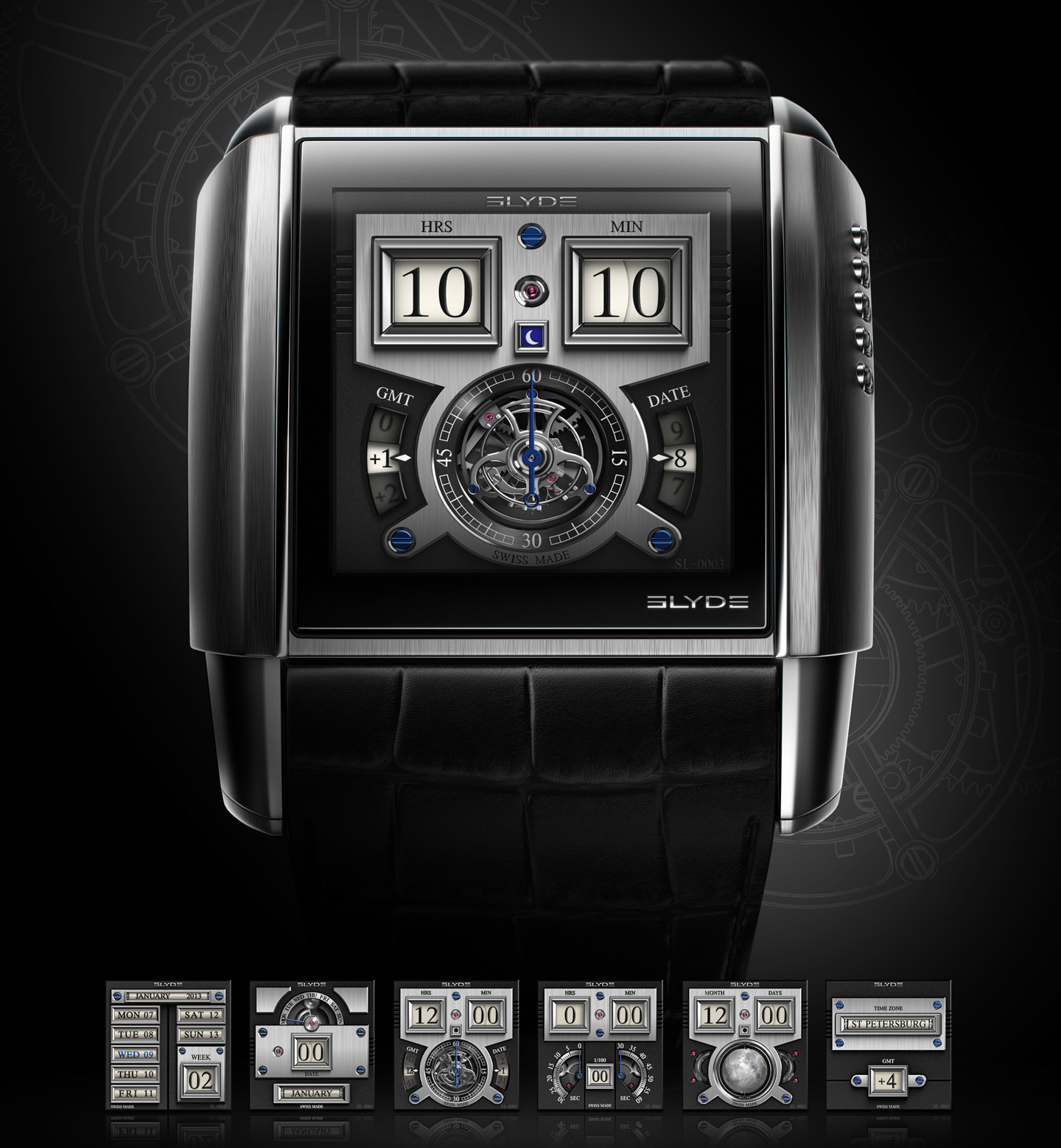
A natural rebel,Gonet blends traditional elements of Swiss watch design and legibility with everything from utopian futurism to neo-modern bio-organic sleekness. One of the latest products designed by him is the updated version of the Ikepod Seaslug. As a design project, this must have been a special treat because the original Seaslug was designed by Ikepod co-founder Marc Newson (who is generally credited with the design of the Apple Watch). Ikepod’s current owner commissioned Gonet to reimagine the 1990s-era Seaslug into something a bit more modern (and affordable) for today. I will explore the Ikepod Seaslug watch in a different article, but it is worth mentioning that in addition to elaborate tourbillons and other complications, you can get Fabrice Gonet-designed watches for relatively accessible prices. Brands that Fabrice designed for pictured in this article include TAG Heuer, MB&F, HD3, Hysek, Corum, MCT, Bomberg, Slyde, Rebellion, and De Bethune.
One of my favorite projects Fabrice was involved with was the development of the Slyde Watch (aBlogtoWatch review here) hardware and software screens. He created animated watch designs for this pre-smartwatch digital timepiece product, which I still believe are some of the best animated digital watch faces made yet. Gonet agreed to a written interview since it was important to me to share his passion and work with the aBlogtoWatch audience. Let’s see what Gonet has to say about watches and design. You can learn more about Fabrice Gonet at his Edge Design firm website here.
Ariel Adams: Watch designers are often the unsung heroes of the watch industry, as they rarely achieve the notoriety they deserve, even though they are responsible for much of the emotional appeal of today’s best watches. Do you feel like an unsung hero or do you feel like you get your share of respect and recognition for your contributions to the modern watch industry?Fabrice Gonet: I don’t really feel like a hero; I am just a designer who tries his best to make mechanical toys for adults. Notoriety is not my ultimate goal, I just want to have fun when I design and I hope the people I collaborate with are happy with the work done. Over the years, I came to realize that the better the human relationship with the client, the better the design. I’ve worked a lot with independent brands that often put me forward and let me communicate about what I do for them, which allows me to showcase my portfolio to find other clients. I’m much more comfortable behind my screen than on the front stage — I feel comfortable in the shadow of my office.
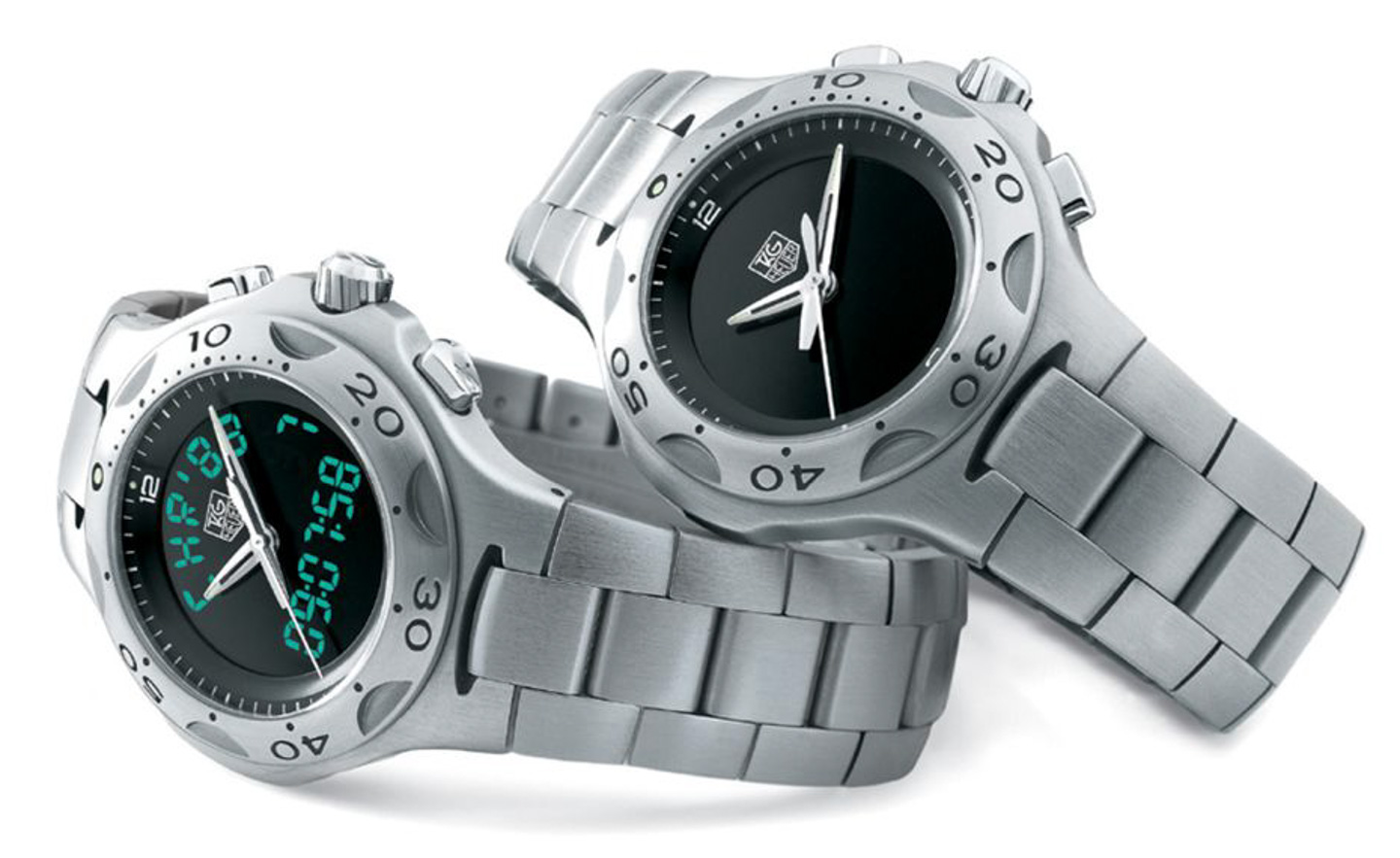
Ariel Adams: For those who don’t know you, you are the name behind some of the most striking modern watch designs of the past two decades. Can you briefly introduce yourself to the aBlogtoWatch audience and share some of the brands and models you are best known for?
Fabrice Gonet: OK, my name is Fabrice Gonet, I live in the suburbs of Lausanne in Switzerland, I’ve been working in the watch industry for the past 28 years, I didn’t graduate from a design school I was trained for the job in the Hysek Styling office, where I designed my first watches, jewelry, and objects.
I designed the Abyss diver model for Jorg Hysek, the Tag Heuer Kirium F1, the Raptor Tourbillon for HD3, the Vulcania tourbillon Bi-Axial for HD3, the S-200 for MCT, the Weap One for Rebellion, the DB28 GS for De Bethune, the Medusa for MB&F, the Corum bridge for the 10 years, and lately, the Seapod for Ikepod — and several others I’m not allowed to talk about.
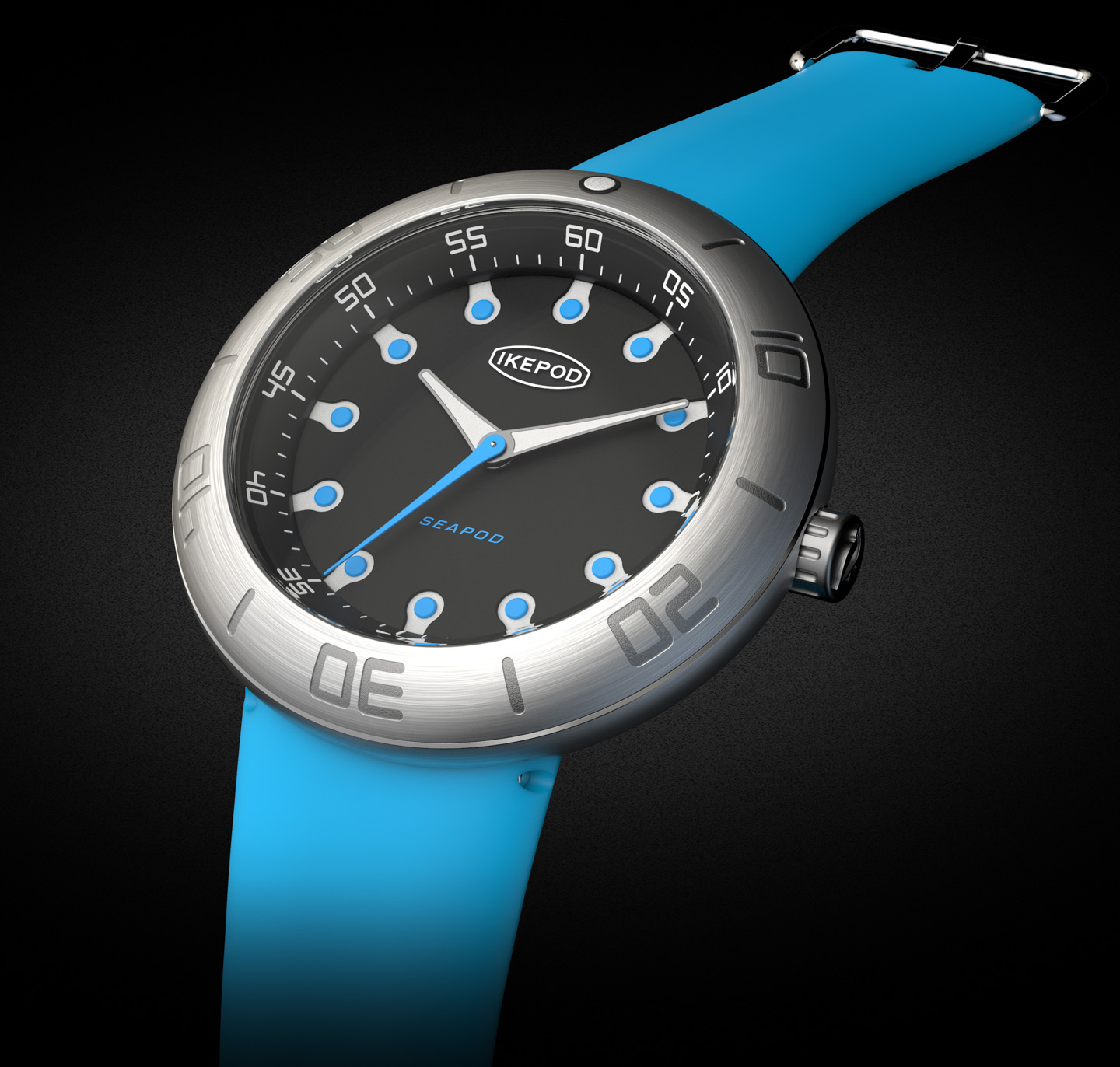
Ariel Adams: We are in the midst of a neo-vintage revival in wristwatch tastes, which is a major change from the luxury watch industry 10 or 15 years ago. What were the current tastes when you started as a watch designer, and tell us why you focused on modern and futuristic design?
Fabrice Gonet: When I started in watchmaking, I was very young and my influences were science fiction movies or Japanese cartoons that I grew up with. My classical watchmaking culture was not very developed — it came over time with my training in the office of Jorg Hysek (Hysek Styling) where I met many other designers who all gave me something. The chance I had at Hysek Styling, which was at the time one of the most important offices in watch design, was to work for many big and small brands in many different styles and ranges. Hysek always pushed me to have new ideas or modern concepts, his vision of watchmaking is very futuristic, and I think I felt comfortable in this stylistic environment.
My first commercialized watch design when I was 18 years old was for an Italian jeweler (Damiani), and it was not very futuristic 😉 Moreover, even if I made a lot of futuristic or sporty watches, I am a big fan of vintage watches. If I had to buy a watch right now, I would buy a Heuer Autavia Bundeswehr or an orange boy. I would dream of upgrading a vintage or classic piece. Moreover, I have the impression that this neo-vintage trend is currently found in a lot of new entry-level brands that give the opportunity to watch lovers to acquire a watch that looks like an icon that they always wanted to wear but was inaccessible to them… so why not?
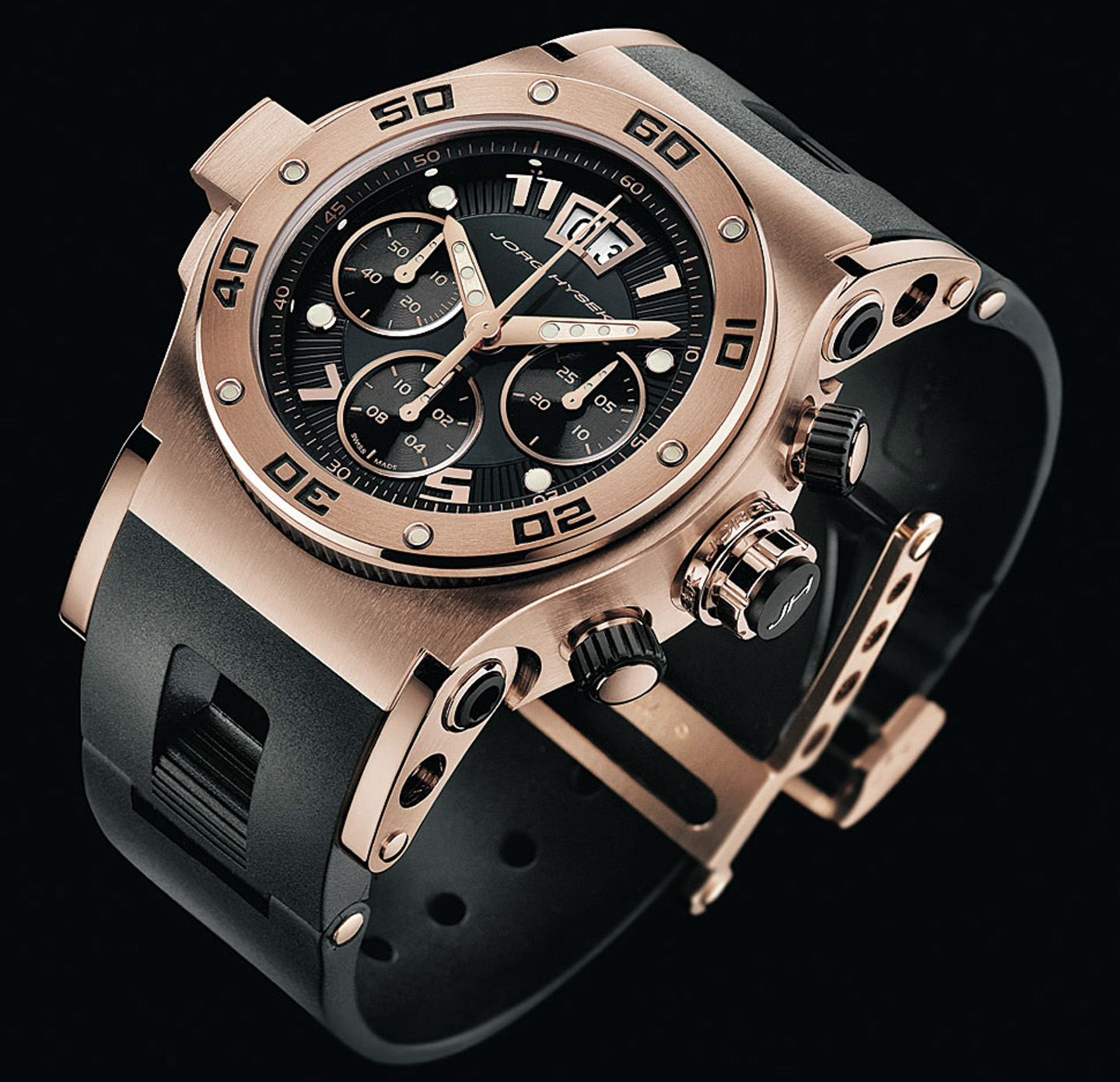
Ariel Adams: You worked for many years with watch designer Jorg Hysek at his eponymous Hysek brand and at HD3. What did you learn from Mr. Hysek? What do you think he learned from you?
Fabrice Gonet: Hysek took me under his wing when I was 17 years-old, when I was a rebellious brat who had failed in school and was completely helpless in the world of work and adults. I didn’t have a school certificate, but just a portfolio with drawings from school or drawings I made during internships. He gave me a great opportunity. If I look back, I say to myself that he taught me a trade that became a passion, and later he associated with me and Valérie Ursenbacher to create a watch brand (HD3 Complication). I think I can say that I owe him a lot. I just taught him to use 2d and 3d software, which didn’t exist when I started with him, and to open beers with a lighter 😉
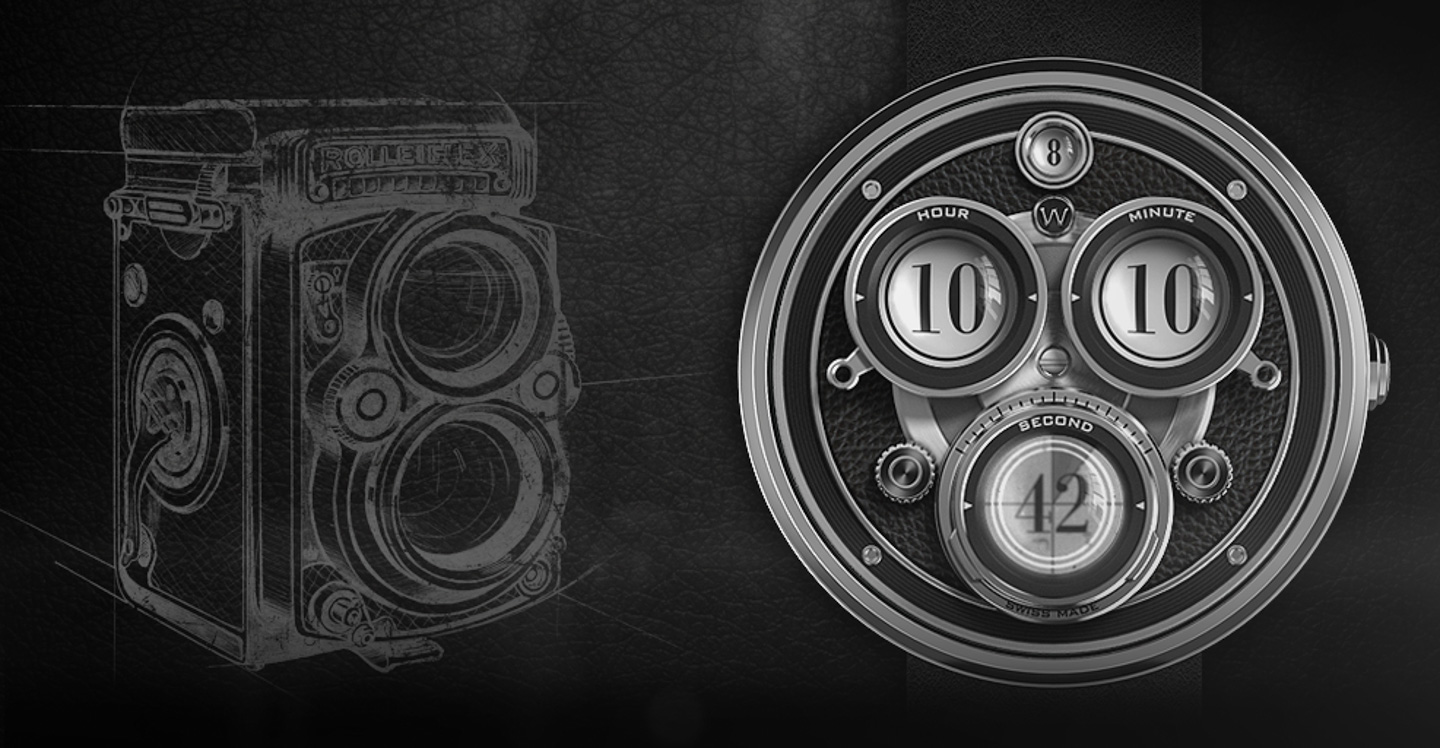
Ariel Adams: Your last hour with HD3 was the Slyde digital screen watch, a product that was just a little ahead of its time. It was the “unconnected” smartwatch with an emphasis on design and the quality of the animated faces that Slyde called “engines.” I was also very impressed with these animated watch faces and expect them to appear in this quality on today’s smartwatches. Can you talk a little bit about what it was like designing digital watch faces versus physical watch faces, and what you think your potential future is in designing smartwatch faces?
Fabrice Gonet: The Slyde adventure has thrown me into a world that is very different from traditional watchmaking, but one that I’m passionate about, as I’m a real gamer geek. It was very interesting, especially because we had to develop things with engineers that didn’t exist at that time, everything was custom-made at all levels. The coolest idea for me was to give us the ability to make virtual watch complications that would be impossible to do in real life. So we merged our watch design work with the work of our computer graphic designers (Trait d’esprit) who were making our computer graphics for our print and web communication at the time and animated these images with the software we had developed for the Slyde to create hyper-realistic watch faces in real-time 3D.
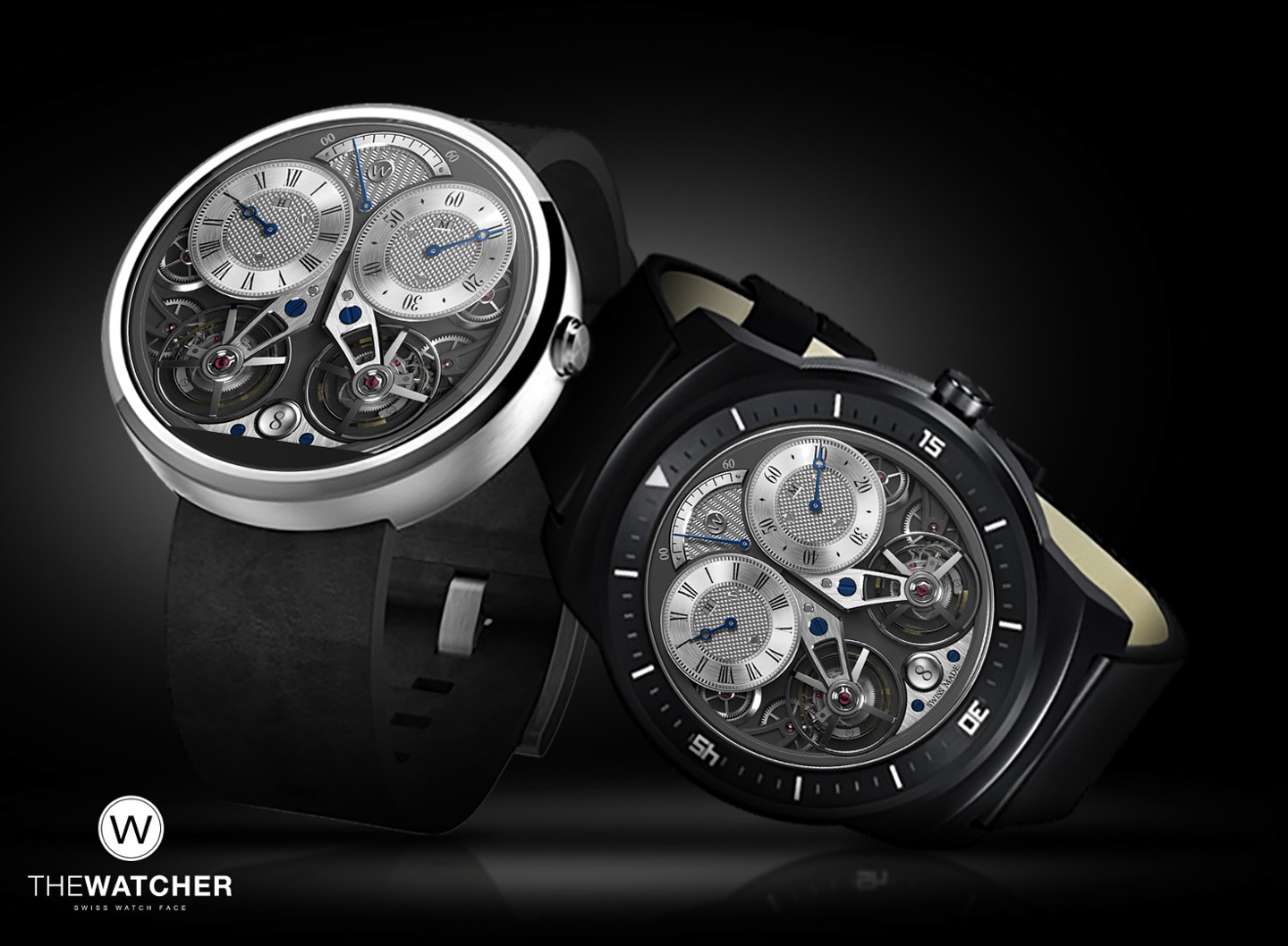
We had even contacted several famous watchmakers like Eric Coudray, Antoine Preziuso, and others to create unique creations that could be uploaded on the Slyde. After Slyde I tried to propose this knowledge to brands that had connected watches, we designed with some of the former Slyde team a watch face for a big brand and we marketed two others on the Google store. I think that the people to whom we offered our know-how did not understand the potential of our technology.
When I see the watch faces on some connected watches on the market, I feel like I’m looking at flat, monotonous 2d illustrator drawing. I am under the impression that there are, on one side, watch brands that want to make connected watches, and on the other side, engineers that want to make watches, but there is no real fusion between the two.
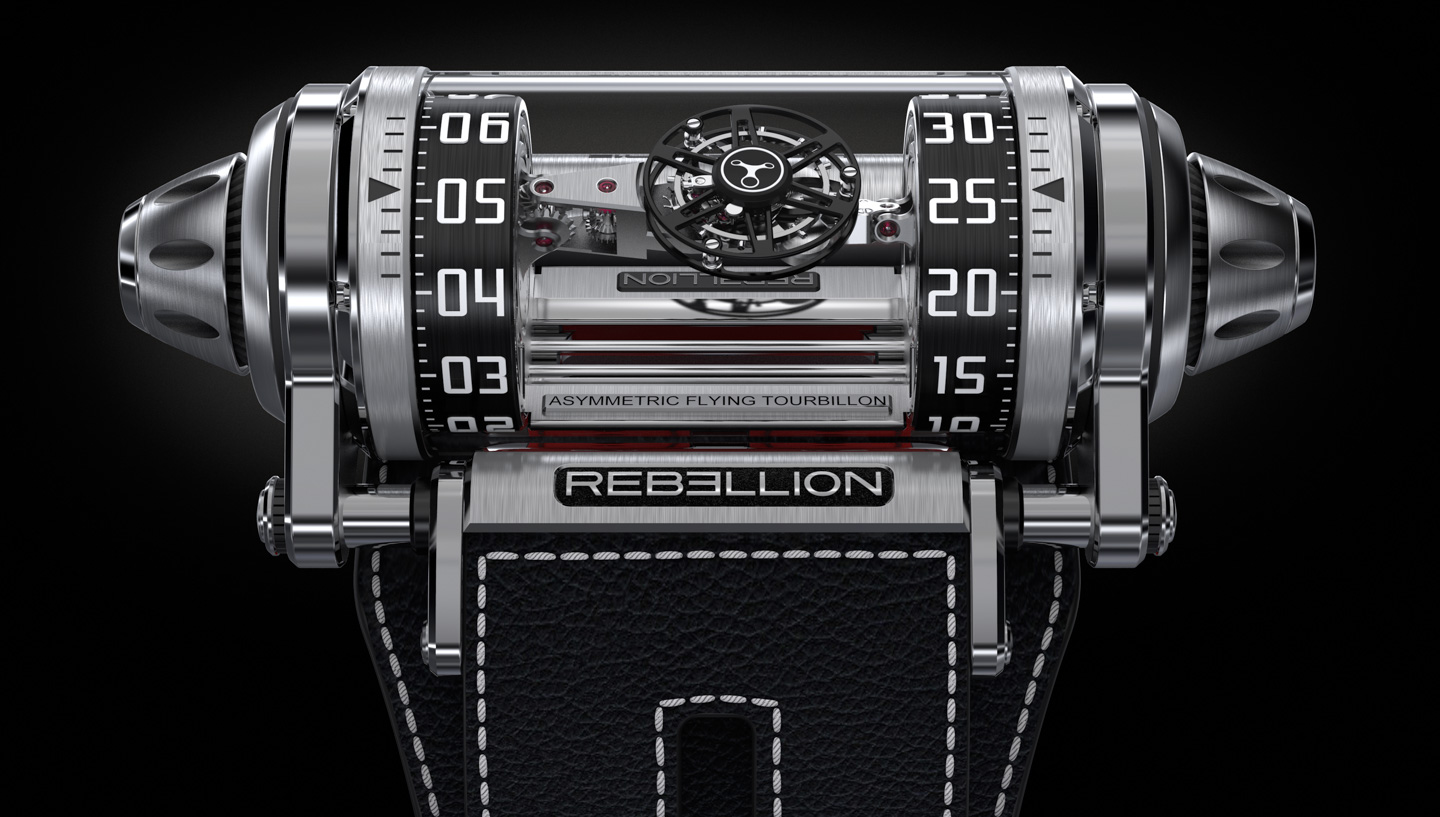
Ariel Adams: Modern, futuristic design — whether for watches or anything else — requires a bit of risk and imagination to be both original and provocative. Yet we exist in a watch industry that is conservative and afraid to invent new things. What makes you a rebel within your own industry and what do you think the industry can do today to be more accommodating to vision and risk in design and business decisions.
Fabrice Gonet: I think the business stakes today for big brands are so high that decisions are no longer made by instinct, intuition, or passion by an executive, but by finance. The risks are so calculated by finance, marketing and sales, that the space for creation is very limited. I receive a lot of marketing briefs that are very similar, the brands look at what works with the competition and want the same thing with a twist to be different.
After that, this freedom of creation and innovation is often found with independent brands, who take more risks to stand out. My rebellious side is perhaps to remain an independent designer who works on many different projects and who does not make his career in a big company where I think I would be bored quickly doing more internal politics and meetings than design. The time when I was involved with the HD3 complication brand was very fulfilling, I was creating the design I wanted without too many compromises, even if today I would do some of the things differently.
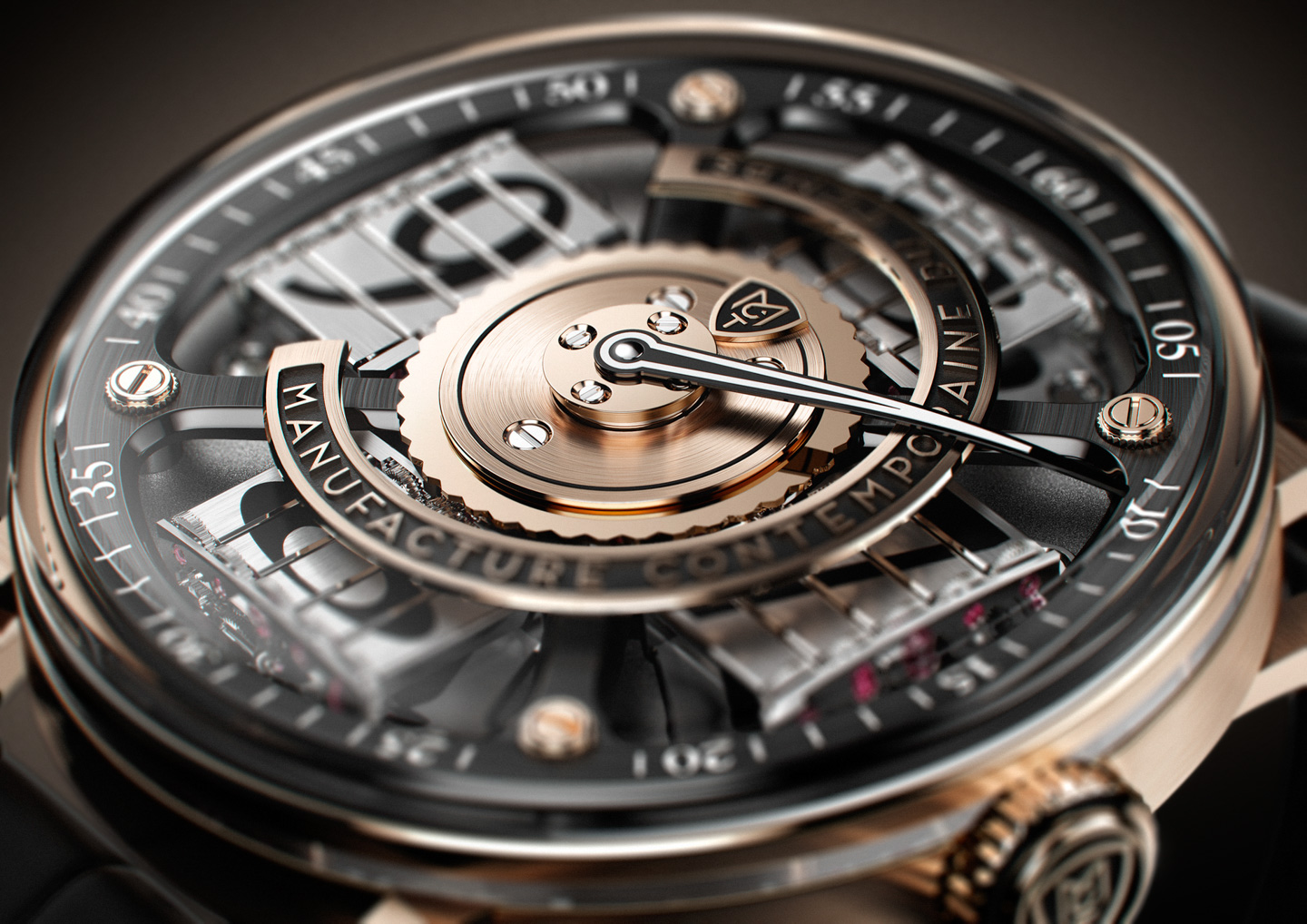
Ariel Adams: How do you approach the task of designing a new watch face? What are the main elements and how do you ensure that the design results in both visual appeal and utility?
Fabrice Gonet: When I work on an existing base movement and that a dial has to be created and applied on top of it, some technical constraints, like the hands, the counters of a chronograph, or the position of a function already give me a good graphic idea for the design. Then the thickness of the dial plate gives me the information to know if I will have thickness or not to work with depth. On the dial it’s more a work of 2d graphics, choice of font, shape of index, finishes etc… The possibilities of differentiating oneself on a standard movement are much more limited than on a custom display or on an apparent mechanical movement.
The work on a skeleton movement or a complication allows much more freedom and I use the 3d to work on several levels and on all details of the mechanism, such as bridges, screws, the cutting of cogs, the rotor, a tourbillon cage, or on three-dimensional elements that decorate the movement. The result is often given by the technical construction of the movement, so the idea is to collaborate with a movement builder and to marry the technique and the design. The creation phase is often a good phase of depression at first when you don’t find the solution after a few nights of anguish and when suddenly the right idea arrives and gives shape to the design, you enter a phase of excitement that feels good.
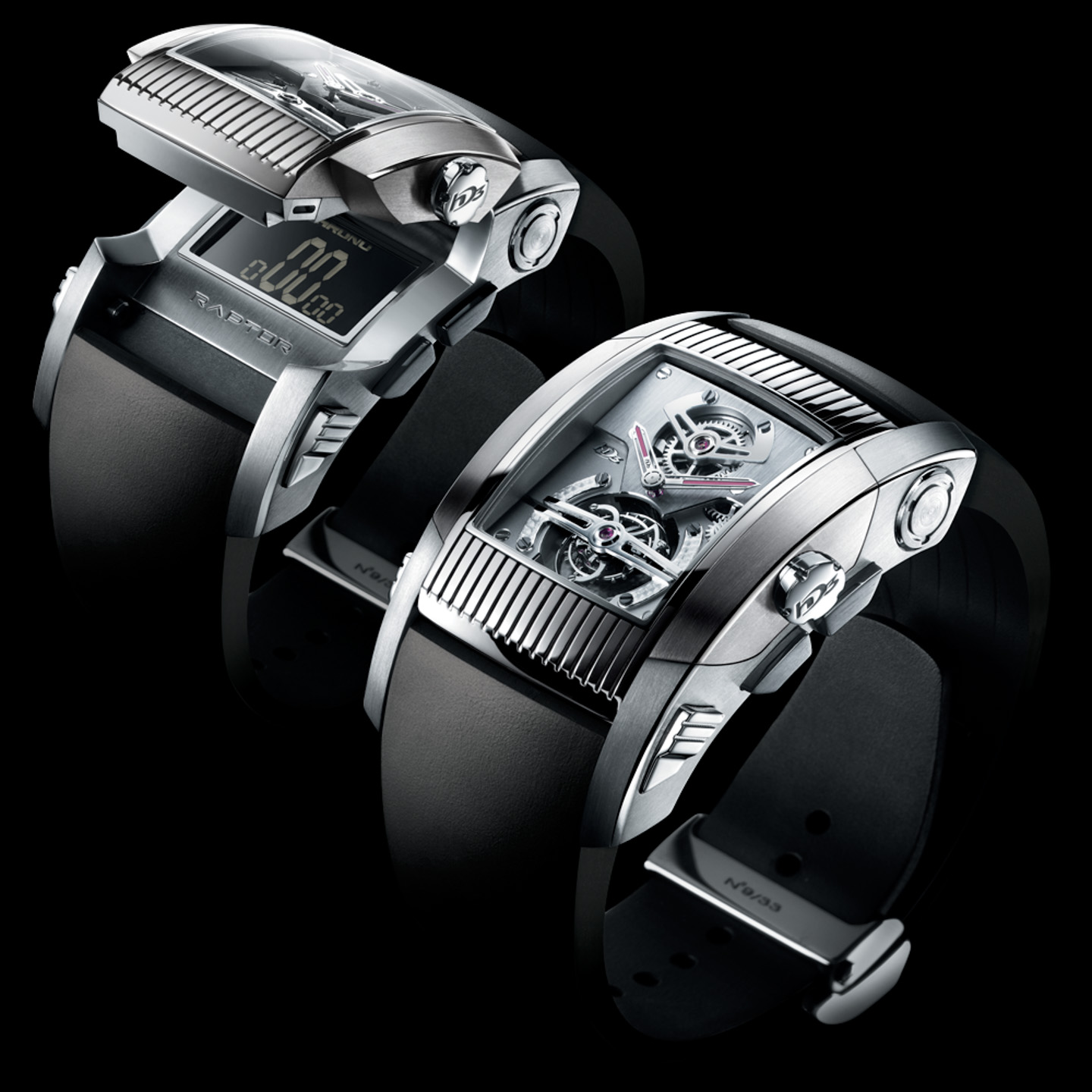
Ariel Adams: What are some of the mistakes or problems that bother you the most in the watch designs you see in general or lately? What are some of the design mistakes you will never make again given your education and experience?
Fabrice Gonet: It’s hard to say, every project has constraints that don’t always make life easier.
One of the problems we often encounter is trying to integrate a metal bracelet on a box that is not designed for it.
The technical constraints of manufacturing are often frustrating even if progress has made things evolve a lot since I started. The choice of manufacturer or manufacturing technique to make a piece is so numerous that sometimes for reasons of price or ease, the realization of a piece may not meet our expectations. Design is important, but working with the right people and craftsmen is also super important and imperative to design success. One of the problems we often encounter in design is trying to integrate a metal bracelet on a case that is not designed for it. The watches that have the most beautiful metal bracelet integration are usually designed with it from the first design, like a Royal Oak or a Nautilus. I think that the perceived value of a watch often comes from the quality of the manufacturing and especially the quality of the finishes, which I find are not always up to par.
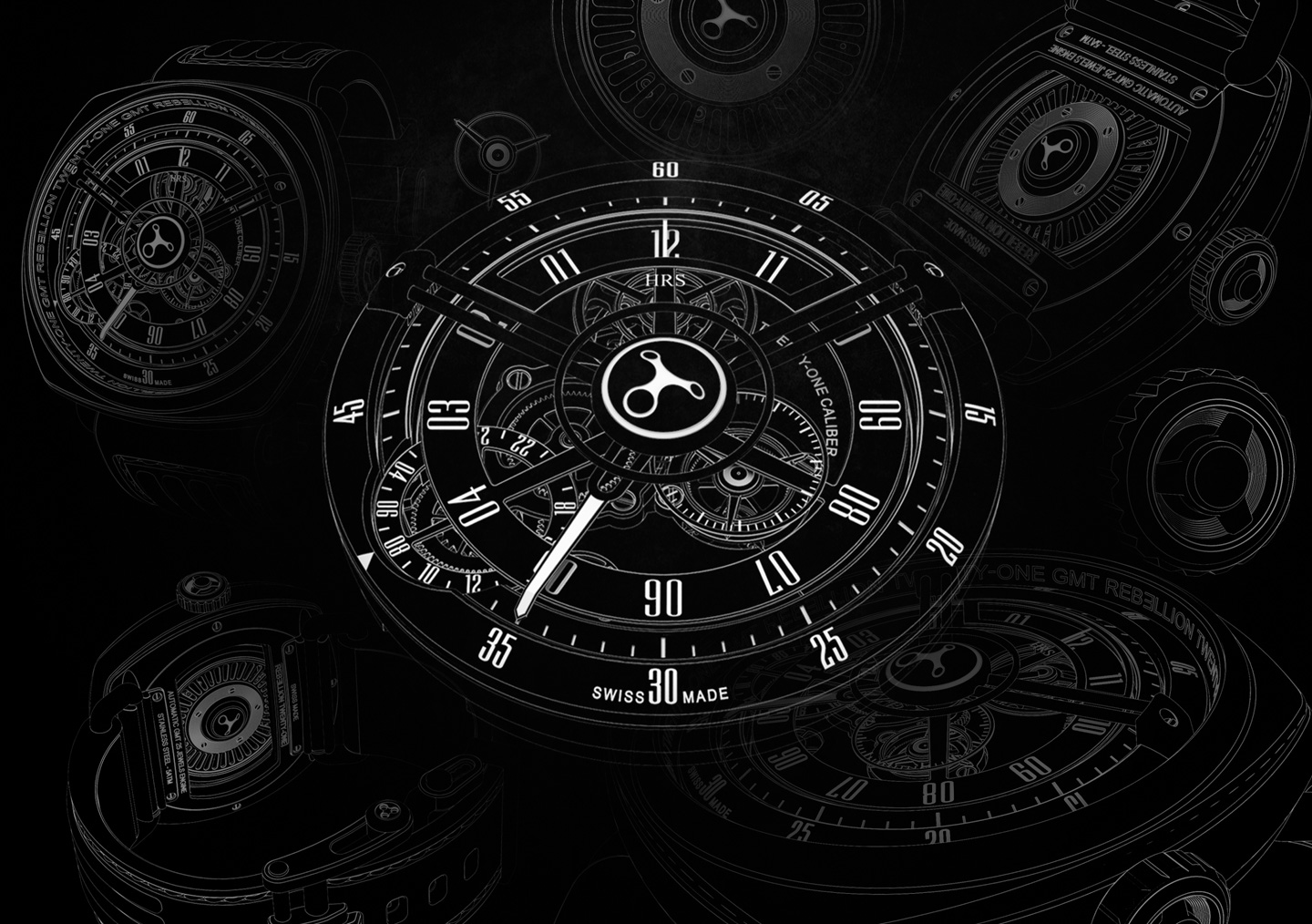
Ariel Adams: Where do you get new ideas for all the client projects you have? Everyone demands not only your best but also new concepts and ideas all the time. Where do you recharge your creative energy and get inspiration?
Fabrice Gonet: I am very curious about what is happening in innovation or in other fields than watchmaking, but also about what was done by our forefathers in the past centuries and can be reinterpreted to the current taste. I watch a lot of movies, series, manga, I surf a lot on the internet and I still play video games like a big kid. My 15 year-old son also keeps me up to date with the latest trends and helps me not to feel too old. Moreover, I’m not alone since, for four years, I’ve been associated in the Edge design studio with another designer I knew at the time at Hysek Styling, Olivier Leu who also has a career of more than 25 years in the watch industry. He’s a big kid like me and we have almost the same passions. I would say that we are complementary and for any designer to have a person to exchange with is very enriching and motivating. Successful projects are often a team effort — alone, it’s difficult.
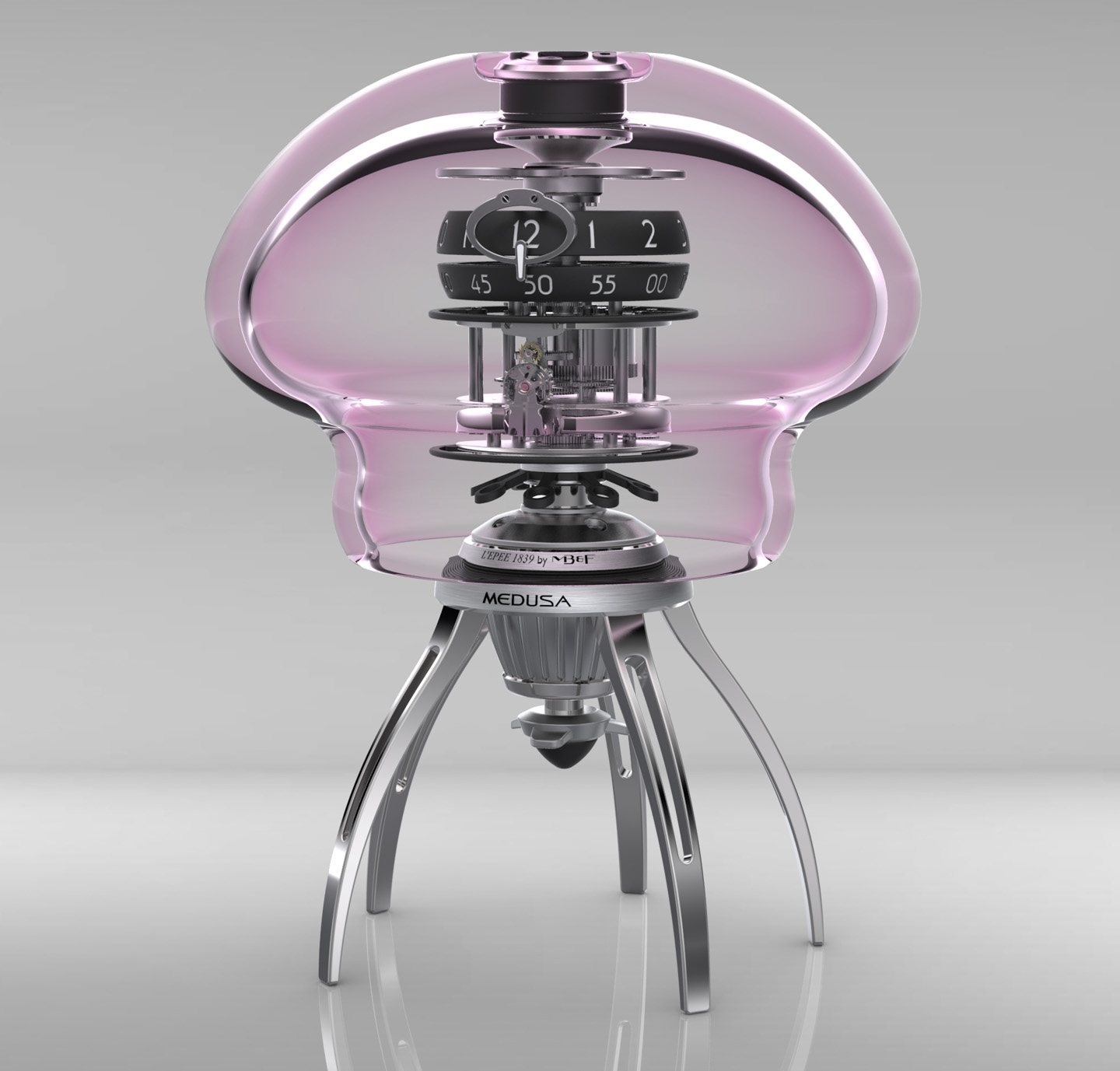
Ariel Adams: As far as I know, there has never been a Fabrice Gonet brand, but I’m sure others have mentioned the idea to you. You’ve personally witnessed some of the problems that can arise when designers become branded figures. Is this a direction you would like to pursue? Why or why not? And what’s next for Fabrice Gonet?
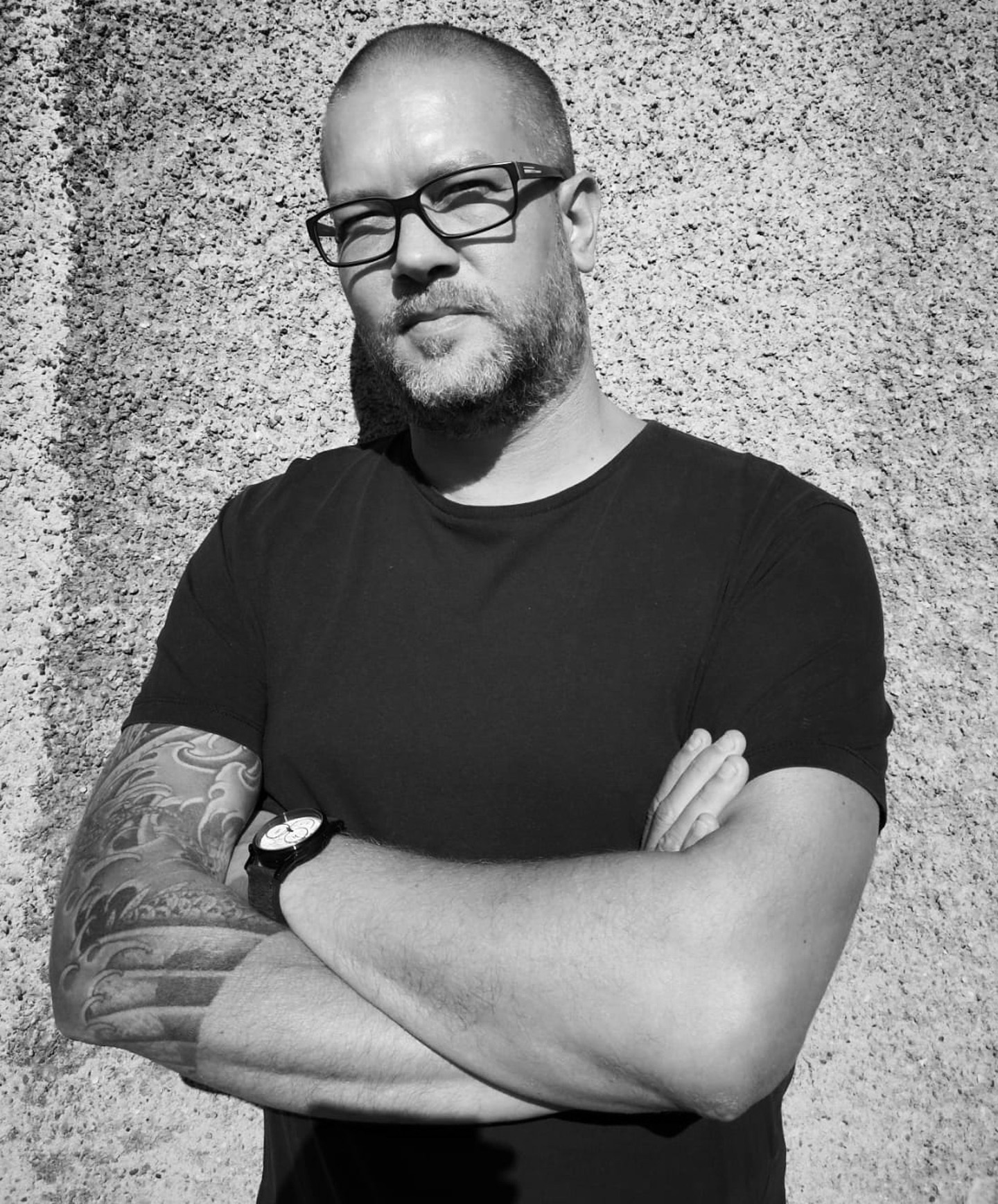
Fabrice Gonet: I would love to have my own product one day, which would certainly not be under the name Fabrice Gonet. I am working with Olivier Leu and a watchmaker with a fairy finger on an idea that is at the prototype stage, but for the moment, we are moving slowly in Switzerland style 😉 It’s hard to find time for our customer projects and especially to finance them. When we are ready, you will be one of the first to see the project, and I think you will be surprised by the style. For the moment, I continue to wander around the world of watchmaking, enjoying working on diverse and exciting projects.

